Whether you are looking for the best honey for a sore throat or to add to yogurt, we are covering everything you need to know about honey and honey varieties!
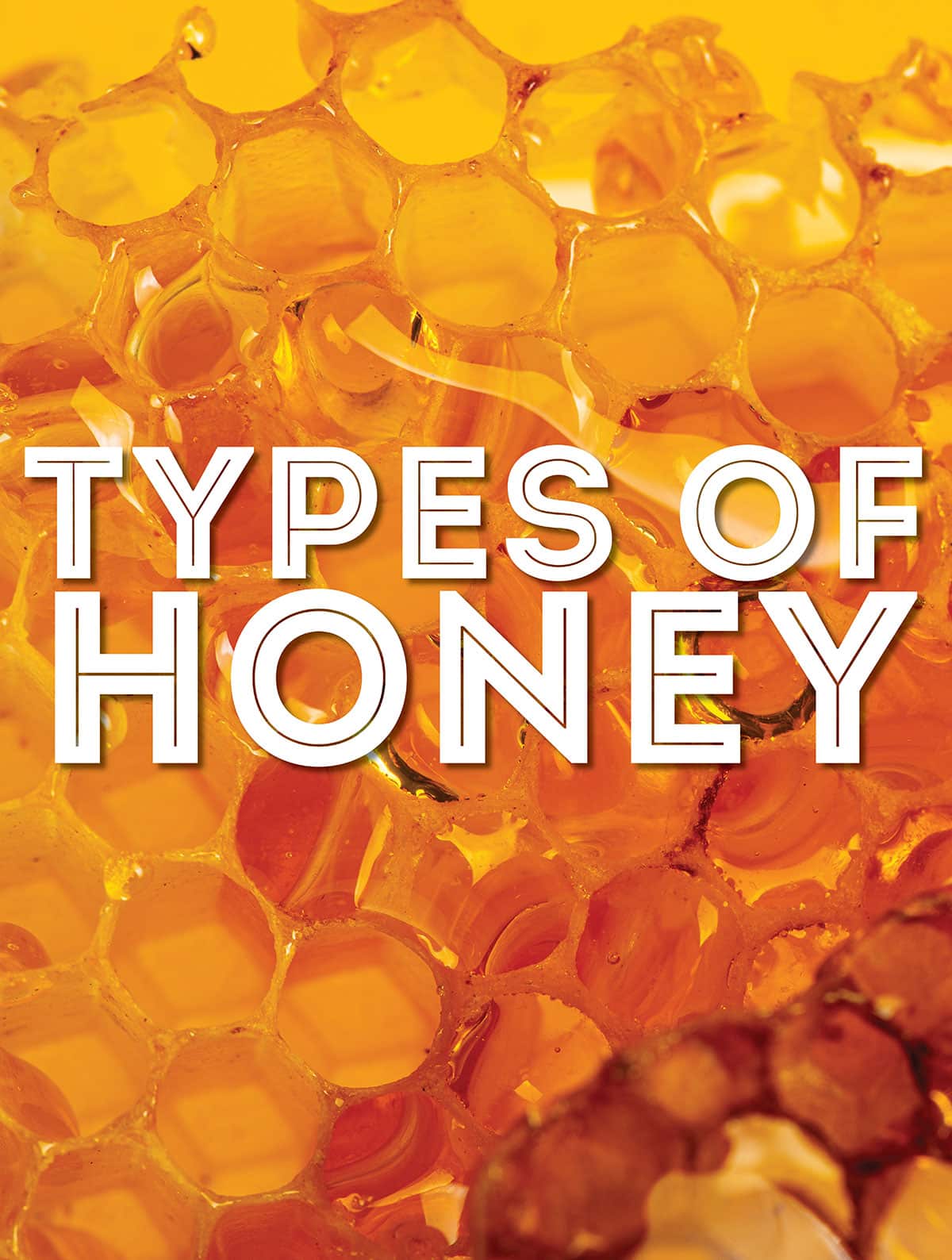
Oh honey, sweet sweet honey! It’s natures most delicious natural sweetener and one of the most sustainable, as long as we protect bees.
So before we get into types of honey it is also important to keep in mind the well documented threat to honeybees worldwide. The Honeybee Conservancy estimates that ¼ of all honeybee species are at threat of extinction. Considering that ⅓ of the world’s food is pollinated by bees, this is more than just a sad story.
So, if after reading this post you want to buy honey, we highly encourage supporting your local beekeepers by buying local honey!
Honey Trivia
On the lighter side here is a honey trivia question before we start. How much honey does a worker bee produce in her lifetime? Scroll to the bottom of this post to get the answer!
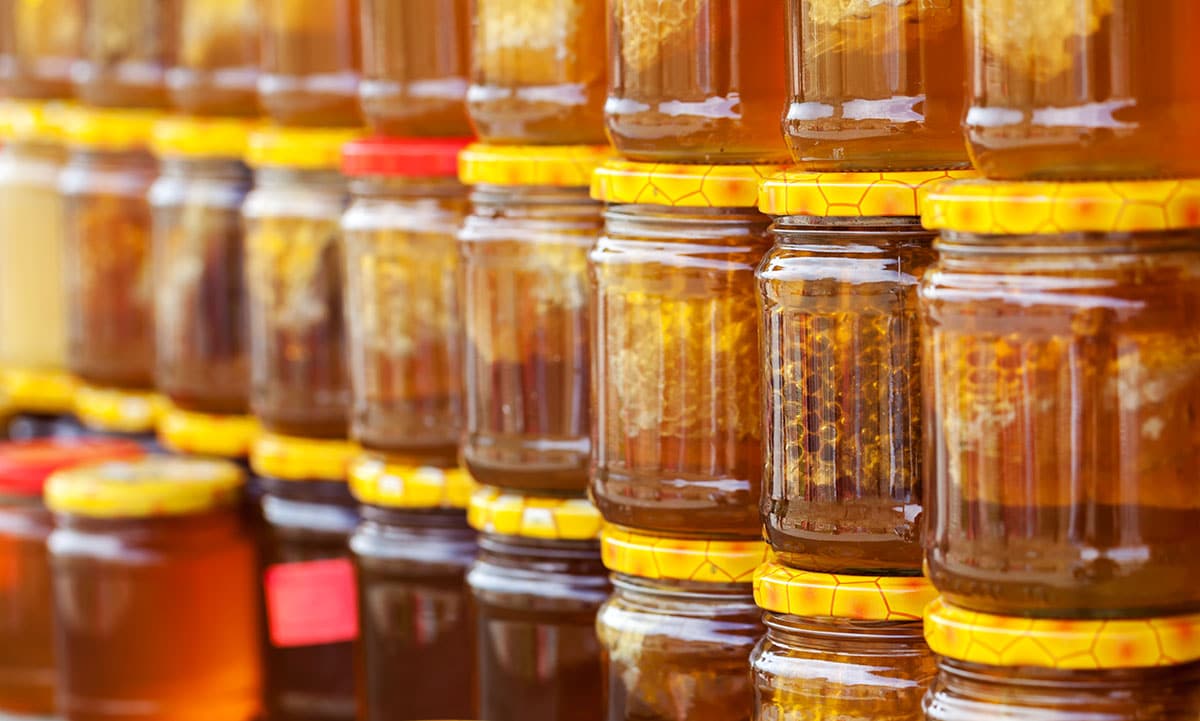
Honey’s Long Wonderful History
Honey has a long history and its origin can be traced back thousands of years.The collection of honey by humans dates back to prehistoric times. Archaeological evidence suggests that early humans gathered honey from wild beehives in rock crevices or trees. Cave paintings in Spain, estimated to be over 8,000 years old, depict humans harvesting honey.
Honey was highly regarded in ancient Egypt, and was a staple in their diet. It was used not only as a food but also for medicinal purposes and in religious rituals. Ancient Egyptians were likely the first beekeepers.
The ancient Greeks and Romans (their empires came about 1,000-1,500 years after the Egyptians peeked) also recognized the value of honey. In Greek mythology, honey was considered the food of the gods and was associated with immortality and healing. Greek philosopher Aristotle wrote extensively on beekeeping and the behavior of bees.
Honey In Modern Times
As civilizations around the world developed, honey production and beekeeping spread, and beekeeping techniques evolved. People started to domesticate bees in hives, making honey production more efficient.
European settlers brought honeybee cultivation to the Americas during the colonial era, further expanding honey production. In the 19th century, beekeeping practices improved with the invention of movable frame hives by Reverend Lorenzo Langstroth, which made it easier to manage bee colonies.
Today honey continues to be a popular and widely consumed natural sweetener. Beekeeping is practiced globally, with different countries producing a variety of honey types based on the local flora and beekeeping traditions.
Health Benefits of Honey
Nutritional value
Honey contains various nutrients such as vitamins, minerals, and antioxidants. While the specific composition can vary, honey typically provides small amounts of vitamin C, calcium, iron, potassium, and zinc.
Alleviating Allergies
If you buy your honey locally, it will be made from the plants native to your area that are often the ones serving as your seasonal allergens. There is strong evidence to suggest that local honey will help boost your resistance to these allergens.
Cough and Sore Throat Relief
Honey is often used as a natural remedy to soothe coughs and relieve sore throats. It coats the throat and can help suppress coughing. Mixing honey with warm water, lemon juice, or herbal teas can provide additional relief.
Antioxidant Properties
Honey contains antioxidants, such as flavonoids and phenolic compounds, which can help reduce oxidative stress and inflammation in the body. Antioxidants play a crucial role in protecting the body against cell damage and certain chronic diseases.
Digestive Health
Some types of honey, particularly raw honey, contain natural enzymes and prebiotics that can support a healthy digestive system. These properties may help improve gut health, aid digestion, and alleviate symptoms of gastrointestinal disorders.
potential risks
Despite its potential benefits, it’s essential to note that honey is still a form of sugar, and should be consumed in moderation. Excessive intake can contribute to weight gain and may negatively impact blood sugar levels, especially in individuals with diabetes. Also, infants under one year of age should not consume honey due to the risk of botulism.
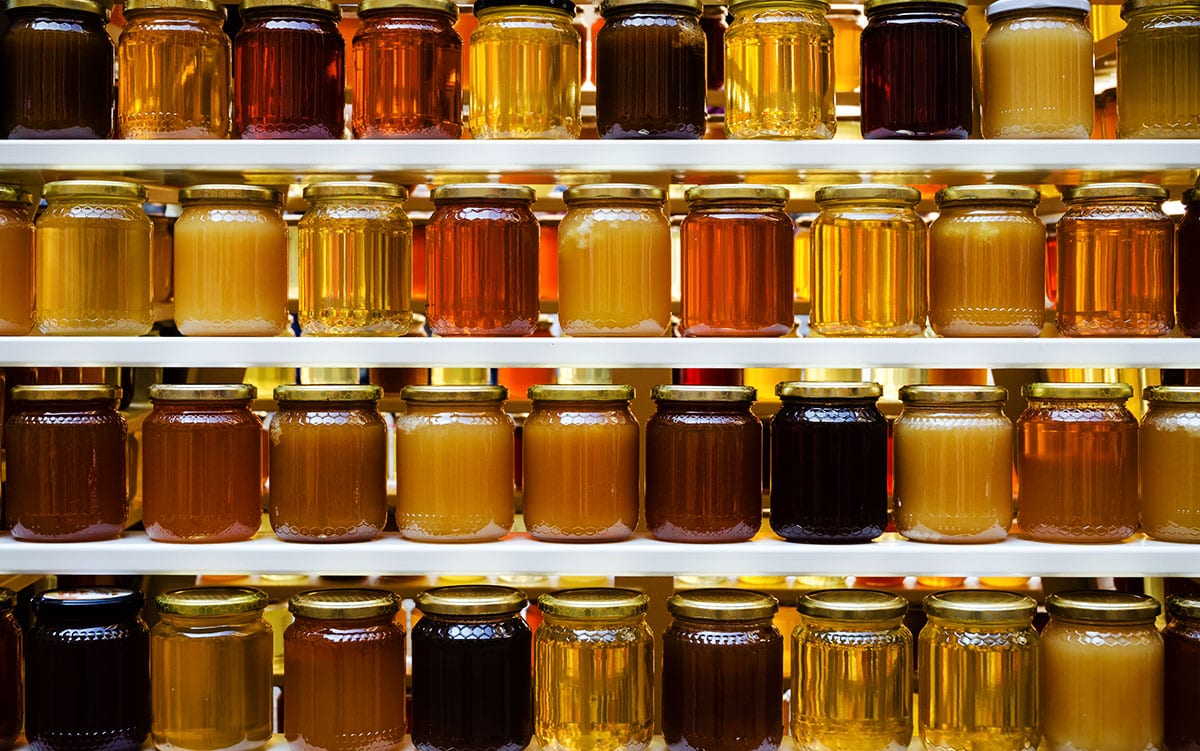
The Many Uses of Honey
Honey is well-suited for culinary purposes and pairs well with both sweet and savory dishes. It can be used as a natural sweetener in beverages like tea and lemonade, or as a drizzle over fresh fruit, yogurt, or cheese.
Many varieties of honey are also an excellent addition to marinades, salad dressings, glazes for roasted meats, and baked goods. It’s unique flavor adds a touch of sophistication to various recipes. In our look at 29 honey varieties below we will suggest some of the most common uses for each variety.
We have two salads created here at Live Eat Learn that feature honey Grilled Broccoli Salad and Shaved Brussels Sprout Salad, but our hands down favorite use is in any of these 33 Smoothie Recipes Great with Honey.
Different Types of Honey
Many of these different types of honey may be hard to find. You can check speciality shops or, better yet, support local bees by buying local honey.
Acacia Honey
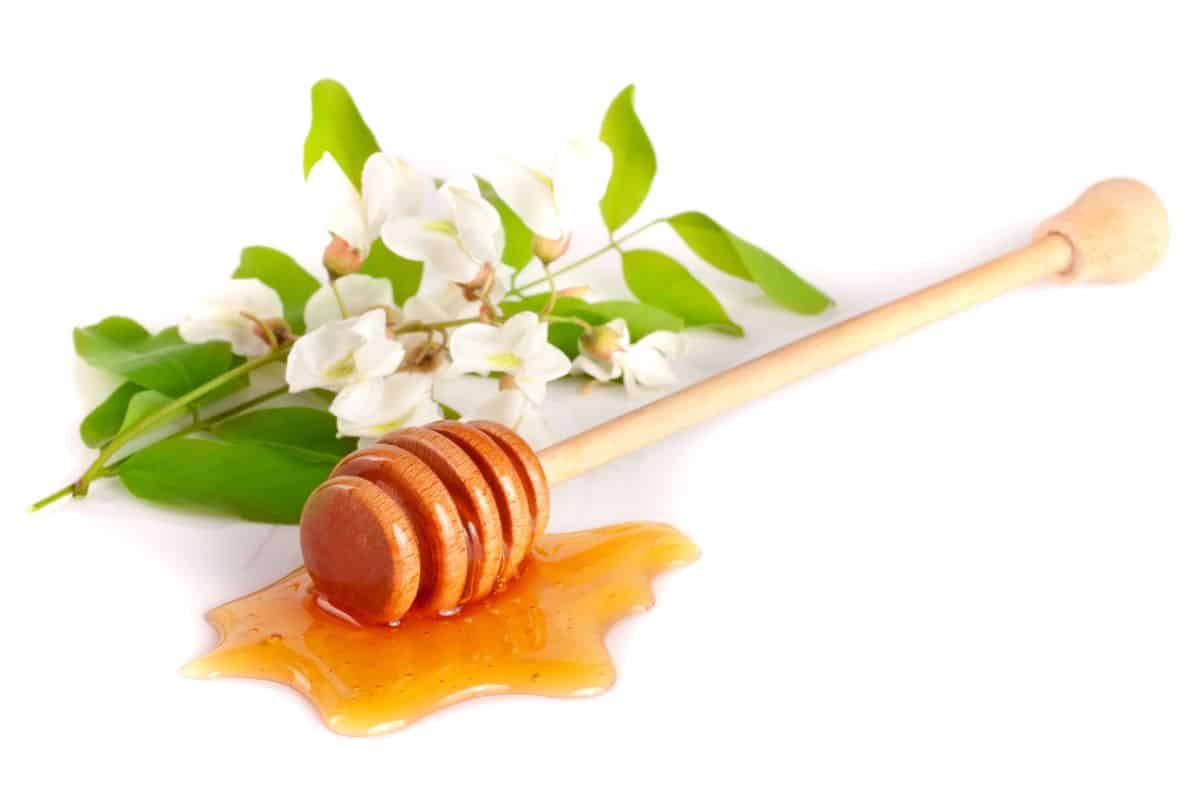
Origin: Acacia honey is derived from the nectar of the blossoms of the black locust tree which is predominantly found in Europe and North America. Acacia honey has a delicate and mild flavor with hints of floral and vanilla notes. It is known for its exceptional sweetness and tends to remain liquid for a long time due to its high fructose content. It is typically pale golden or light yellow in color with excellent clarity and a transparent appearance.
Flavor: Acacia honey is highly regarded for its mild taste and is often preferred as a table honey. Its subtle flavor makes it a popular choice for sweetening beverages, drizzling over desserts, and using as a topping for pancakes or waffles. It is also used in various recipes and as an ingredient in salad dressings or marinades.
Alfalfa Honey
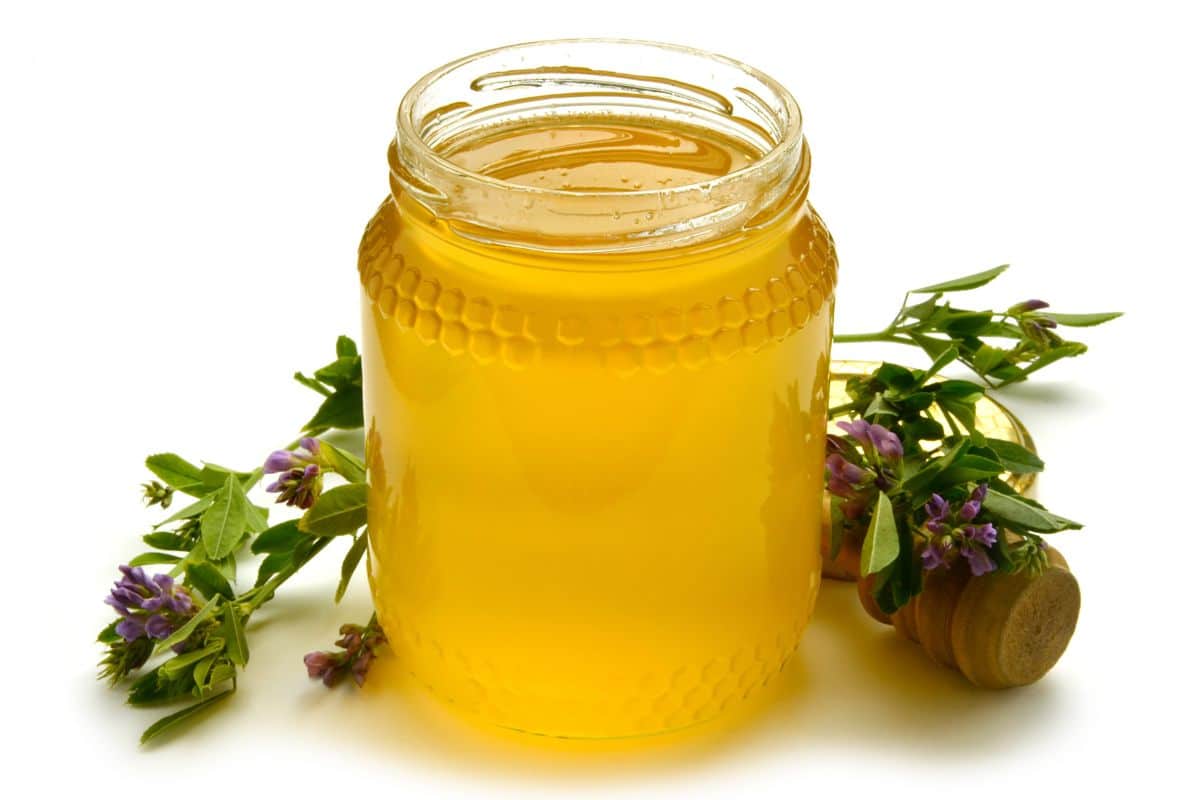
Origin: Alfalfa honey comes from the nectar of the purple or blue flowers of the alfalfa plant. Alfalfa is a perennial flowering plant that is cultivated in many parts of the world including North America, Europe, and Asia. Alfalfa honey typically has a mild, delicate, and slightly herbal flavor with subtle floral undertones. It is known for its smoothness and balanced sweetness. The color of alfalfa honey can vary, ranging from light amber to golden. It often has a clear or slightly opaque appearance.
Flavor: Alfalfa honey is versatile and can be used for various purposes. It’s mild flavor makes it suitable for general sweetening purposes, such as adding to tea or coffee, spreading on bread or toast, or incorporating into salad dressings. It can also be used in baking and cooking recipes, and it pairs well with mild cheeses.
Avocado Honey
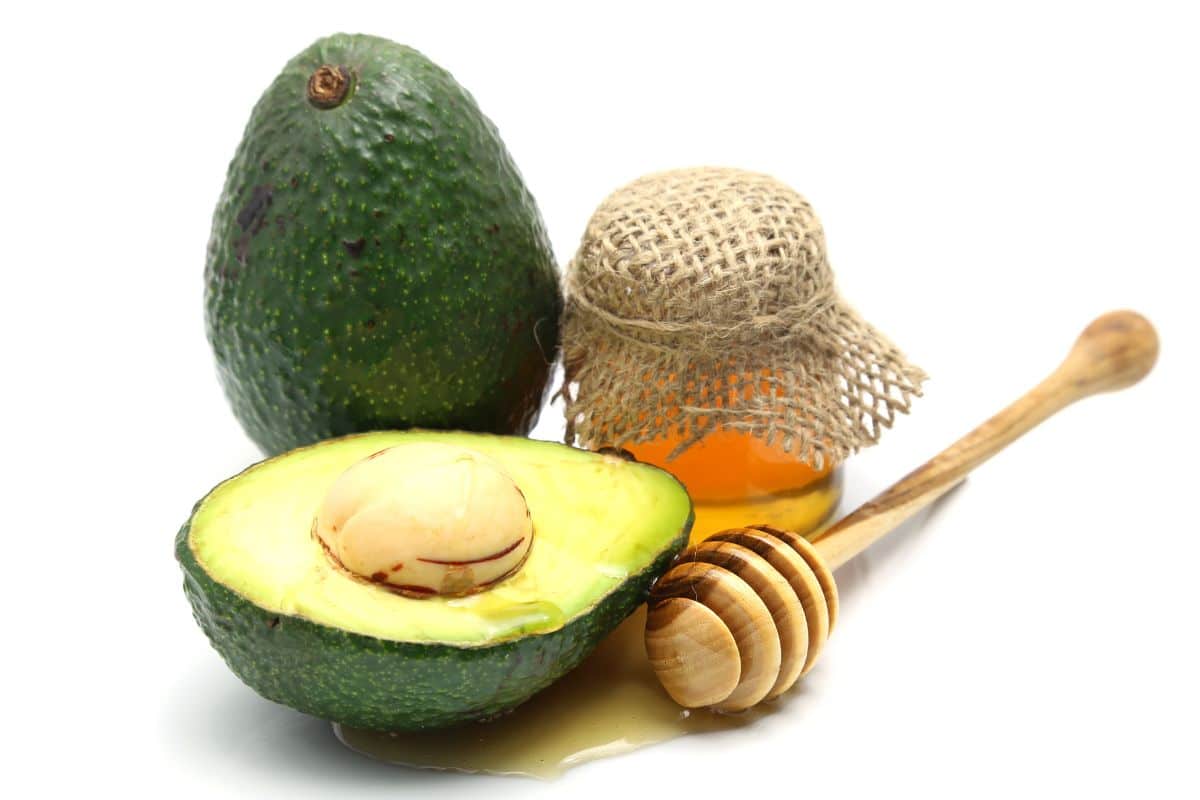
Origin: Avocado honey is produced from the nectar of avocado blossoms. Avocado trees are predominantly found in regions with warm climates, such as California, Florida, and parts of Central and South America. Avocado honey has a rich, buttery flavor with subtle hints of caramel. It is known for its unique taste, which can vary depending on the region and the specific avocado variety.The color of this honey ranges from dark amber to dark brown. It often has a thick and creamy consistency.
Flavor: Avocado honey is prized for its distinct flavor and is often sold as a gourmet honey. Its rich taste makes it an excellent choice for spreading on bread, biscuits, or muffins. It can also be used as a sweetener in beverages or as a topping for desserts. Additionally, avocado honey pairs well with savory foods like cheese or charcuterie boards.
Basswood Honey
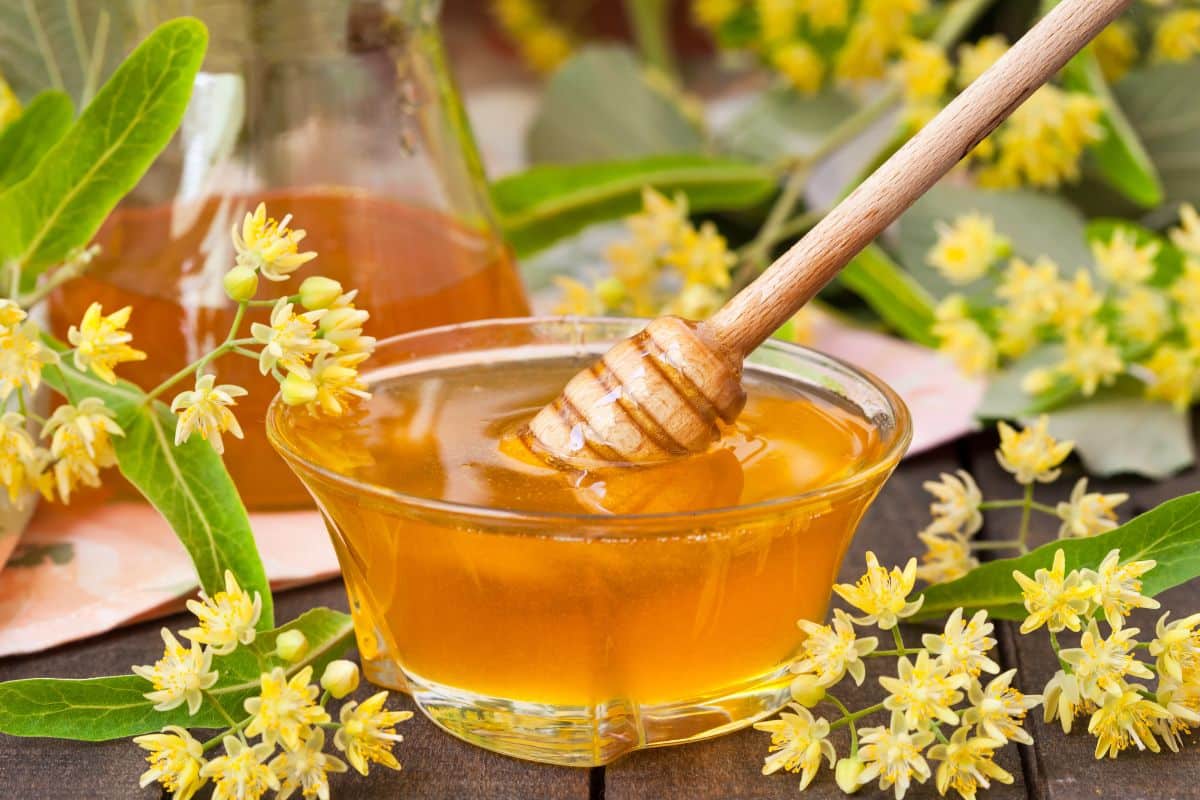
Origin: Basswood honey, also known as linden honey, is derived from the nectar of the blossoms of the basswood or linden tree. These trees are common in Europe and North America. Basswood honey has a light, delicate, and fresh flavor with hints of mint or menthol. It is known for its subtle, almost citrusy undertones.The color of basswood honey ranges from pale yellow to light amber. It often has a clear and translucent appearance.
Flavor: Basswood honey is prized for its delicate flavor and is often sold as a gourmet honey. Its light taste makes it a versatile sweetener for various culinary applications. It can be used in baking recipes, stirred into yogurt or tea, or drizzled over fruit.
Buckwheat Honey
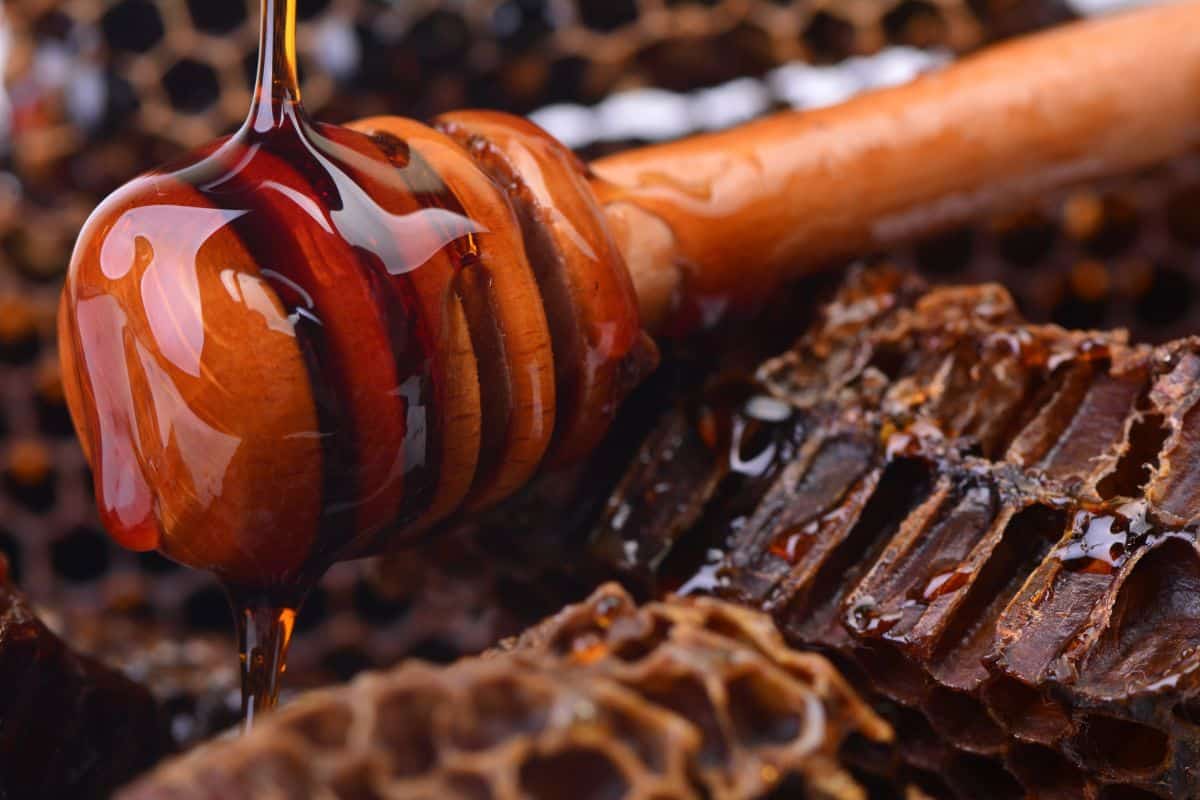
Origin: Buckwheat honey is produced from the nectar of the buckwheat plant, which is not actually a type of wheat but a flowering plant related to rhubarb. It is primarily cultivated in North America and parts of Europe.
Flavor: Buckwheat honey has a distinct and robust flavor profile. It is characterized by its strong, malty taste with hints of molasses, dark chocolate, and a slight bitterness. It has a rich, earthy flavor that some describe as having a “malty, nutty” taste. While related to rhubarb, it lacks rhubarb’s tartness. Buckwheat honey is typically dark amber to dark brown in color, often resembling molasses or maple syrup. The darkness of the honey can vary depending on factors such as the region it is produced in and the processing methods used.
Uses: Buckwheat honey is popularly used as a sweetener and flavor enhancer in various culinary applications. Its strong flavor makes it an excellent choice for baked goods, marinades, dressings, and sauces. It is also enjoyed as a spread on bread or added to teas and beverages for a unique taste. Due to its purported health benefits, it is sometimes used as a natural remedy for soothing sore throats and coughs.
Chestnut Honey
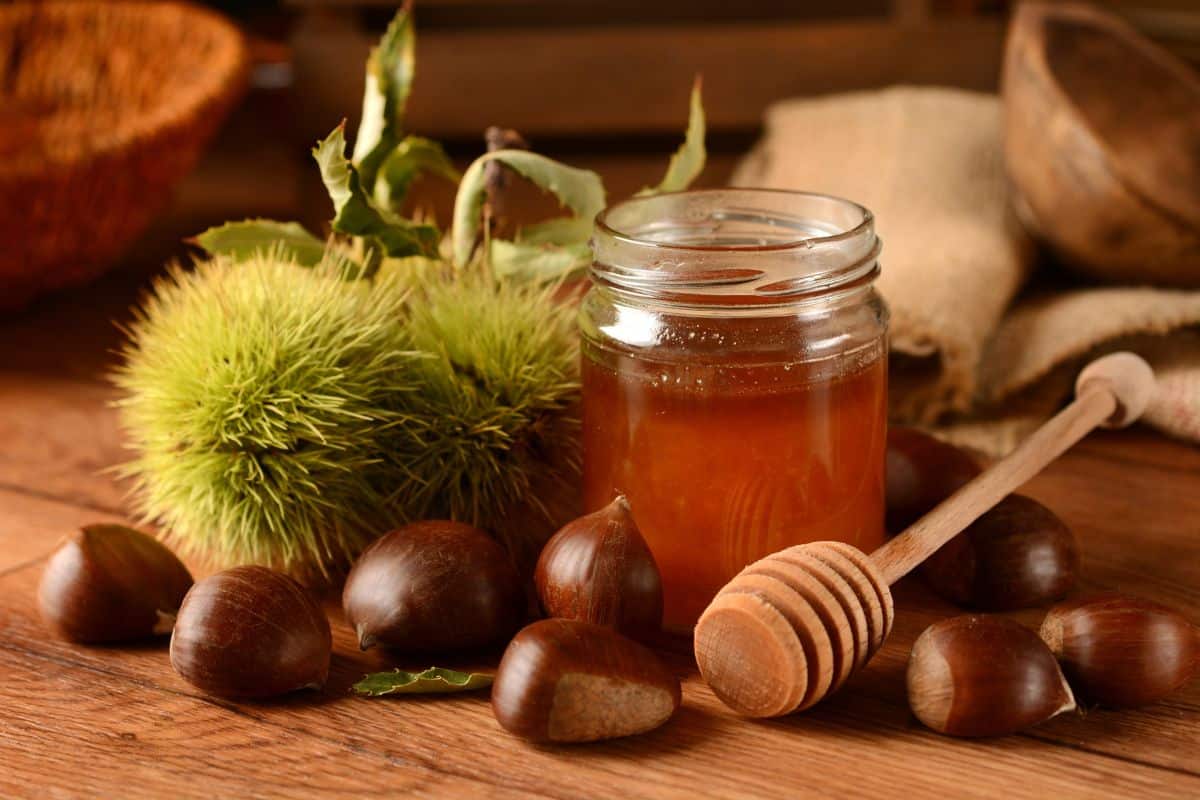
Origin: Chestnut honey is derived from the nectar of chestnut tree flowers. It is primarily produced in regions with abundant chestnut tree populations, such as Mediterranean countries like Italy, Spain, and Greece. Once widespread in the USA, chestnut trees suffered a devastating blight in the early 1900s and never recovered fully.
Flavor: Chestnut honey has a robust, complex flavor profile. It is known for its strong and slightly bitter taste, with woody and smoky undertones. Some people also detect hints of caramel or burnt sugar in its flavor. It tends to have a more savory profile compared to other types of honey. Chestnut honey can vary in color, ranging from dark amber to dark brown. It often has a rich, deep hue with reddish or golden tones.
Uses: Due to its bold flavor, chestnut honey is commonly used in savory dishes, cheese pairings, and charcuterie boards. It can add a unique depth of flavor to glazes, sauces, and marinades. Additionally, it can be enjoyed on toast, biscuits, or as a topping for yogurt and ice cream. In some cultures, it is also used for its purported medicinal properties, such as aiding digestion and promoting respiratory health.
Citrus Honey
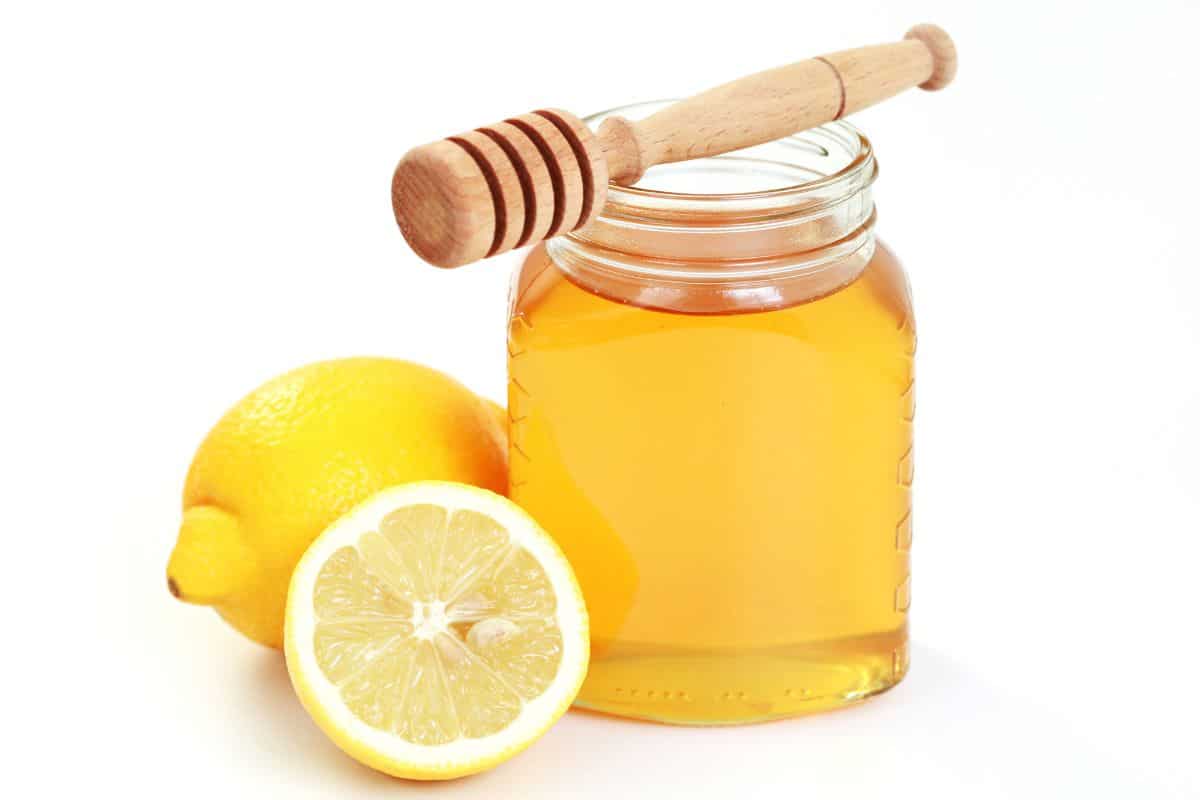
Origin: Citrus honey refers to a type of honey produced from the nectar of various citrus blossoms, including orange, lemon, lime, and grapefruit trees. It is primarily found in regions with significant citrus fruit cultivation, such as Mediterranean countries, Australia, Florida, and California.
Flavor: Citrus honey is known for its light and delicate flavor. It often has a refreshing, citrusy taste with floral undertones. The specific citrus tree from which the honey is derived can influence its flavor profile, resulting in subtle variations. The color of citrus honey can range from light amber to pale yellow, depending on the specific citrus blossoms from which it was sourced.
Uses: Citrus honey is used in both sweet and savory dishes. It can be used as a natural sweetener in beverages, such as tea, lemonade, or cocktails. It is also a popular choice for drizzling over pancakes, waffles, or fruit salads. Its delicate taste makes it an excellent addition to salad dressings, marinades, and glazes. Furthermore, it can be enjoyed on its own or paired with cheeses like goat cheese or ricotta. This is one versatile honey.
Clover Honey
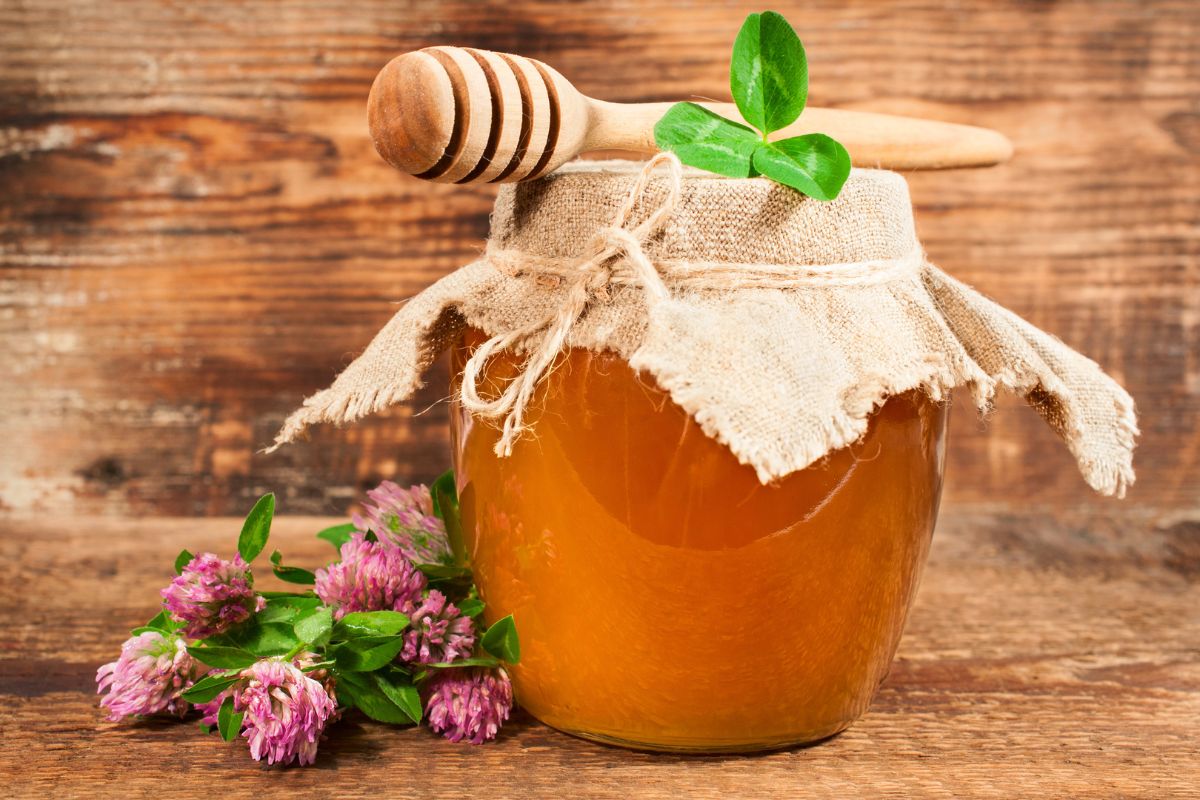
Origin: Clover honey is produced from the nectar of clover plants, particularly white and alsike clover. It is one of the most widely available and popular types of honey, and is produced in many regions worldwide, including the United States, Canada, and New Zealand.
Flavor: Clover honey has a mild, delicate, and pleasant flavor. It is often described as having a sweet, floral taste with hints of cinnamon and vanilla. The flavor profile can vary depending on the specific clover species and the environmental conditions in which it was produced. Clover honey typically has a light golden color, ranging from pale yellow to amber.
Uses: Due to its mild flavor, clover honey is a versatile sweetener that can be used in a wide range of culinary applications. It is commonly used in baking, as a topping for cereals, yogurt, or toast, and as a natural sweetener for beverages such as tea and coffee. It is also an excellent choice for making homemade salad dressings, sauces, and glazes. Clover honey is often enjoyed in its raw form and is a popular addition to cheese boards or charcuterie platters.
Eucalyptus Honey
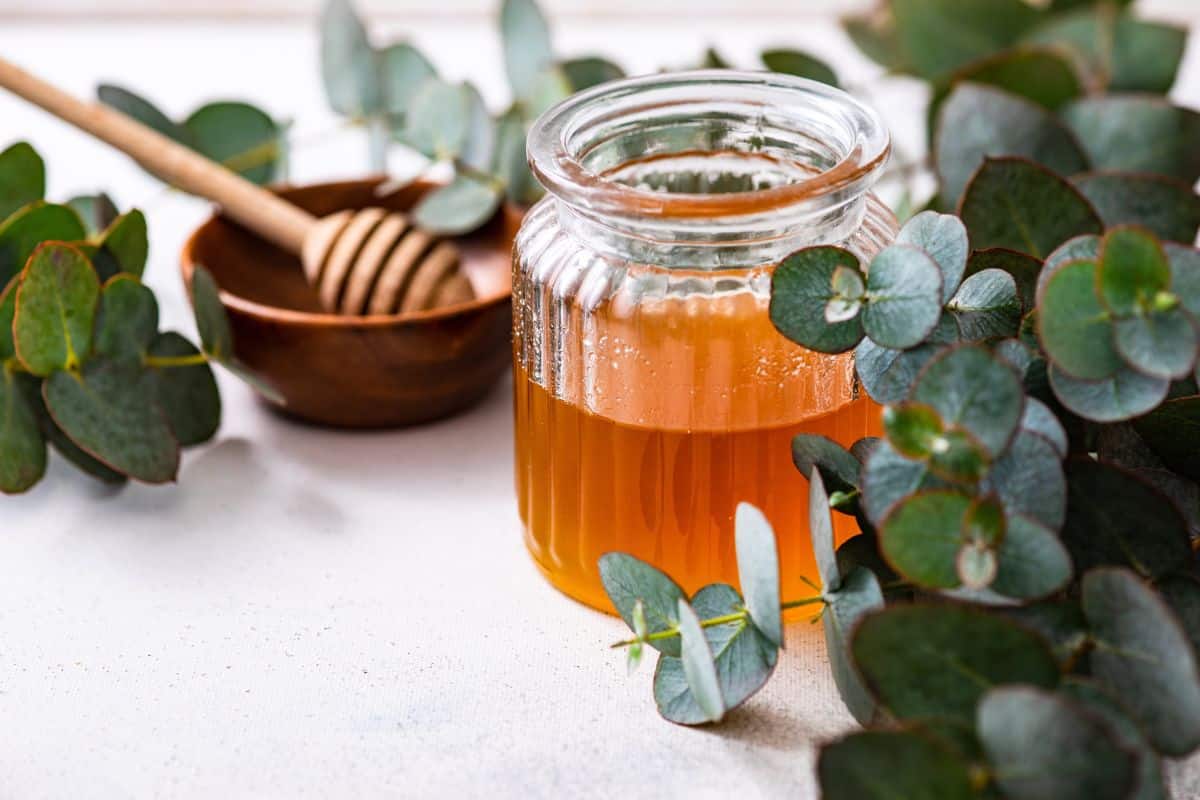
Origin: Eucalyptus honey is derived from the nectar of eucalyptus tree blossoms, primarily from species such as Eucalyptus globulus or Eucalyptus melliodora. It is commonly produced in regions with abundant eucalyptus forests, such as Australia, Spain, and parts of South America.
Flavor: Eucalyptus honey has a distinctive flavor characterized by its herbal, menthol-like notes. It often has a slightly tangy, mildly sweet taste with a hint of floral undertones. Some varieties of eucalyptus honey can have a stronger menthol flavor, while others are milder and more delicate. The color of eucalyptus honey can vary, ranging from light amber to dark amber, depending on the specific eucalyptus species and environmental factors.
Uses: Eucalyptus honey is popular for its unique flavor and in some regions its purported medicinal properties. It is commonly used as a natural remedy for respiratory ailments, such as coughs and colds, due to its perceived soothing effects. It can be enjoyed as a spread on toast, added to herbal teas, or used as a sweetener in beverages. The distinct herbal notes of eucalyptus honey also make it a desirable addition to certain desserts, sauces, and dressings.
Fireweed Honey
Origin: Fireweed honey is derived from the nectar of the fireweed plant, which is native to North America, Europe, and parts of Asia. It is particularly prevalent in regions with open meadows, clearings, or burned areas.
Flavor: Fireweed honey is known for its delicate, light, and floral flavor. It has a slightly sweet taste with subtle hints of caramel and a mild tangy aftertaste. The flavor can vary depending on the specific region and climate where the honey is harvested. Fireweed honey typically has a pale to medium amber color, resembling a golden hue. The color can range from light yellow to light amber, depending on the concentration of the fireweed nectar in the honey.
Uses: Fireweed honey is commonly used as a sweetener in various recipes including dressings, marinades, and baked goods. Fireweed honey is also highly regarded for its potential health benefits, such as its antibacterial properties and potential antioxidant content.
Heather Honey
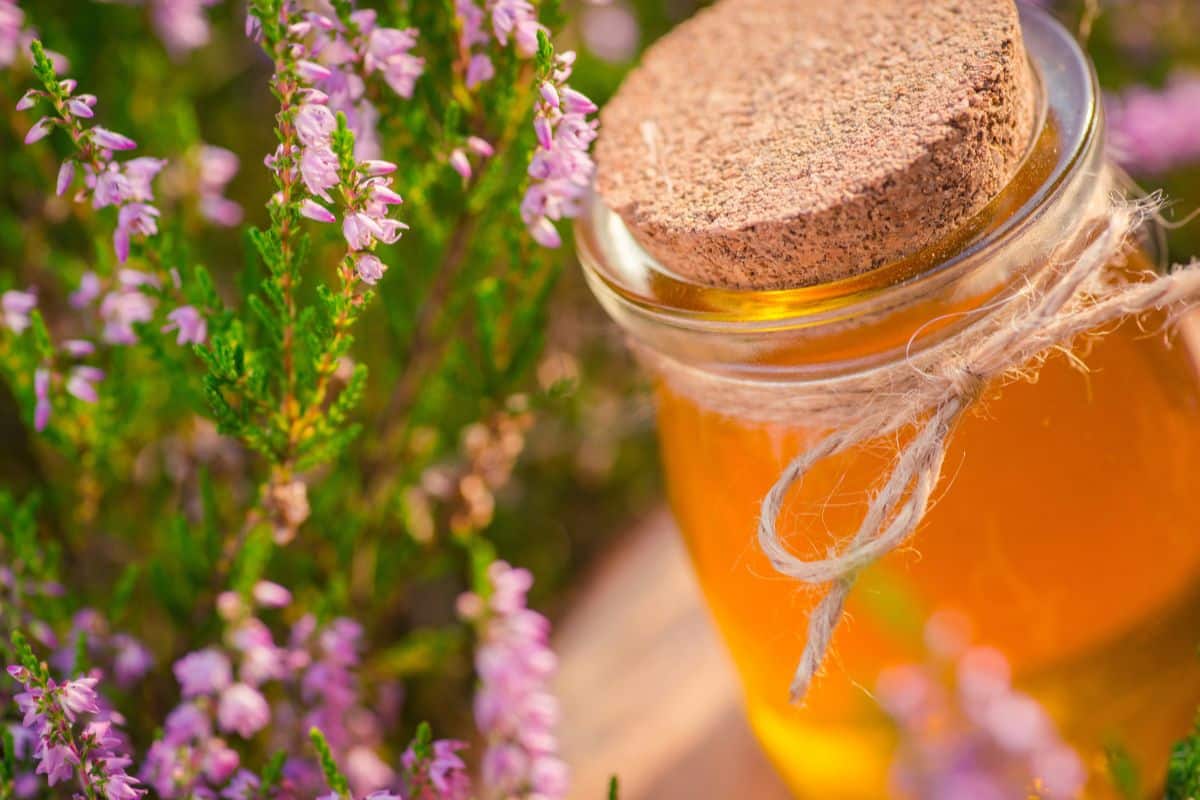
Origin: Heather honey is produced from the nectar of flowering heather plants, specifically the Calluna vulgaris species found in moorlands across Europe, especially Scottland, Ireland, and parts of Spain.
Flavor: Heather honey has a distinctive, robust, and aromatic flavor. It is often described as earthy, floral, and slightly bitter. The taste can be intense, with notes of caramel and a hint of smokiness. The flavor profile of heather honey can vary depending on the region and the time of harvest. Heather honey exhibits a dark amber to reddish-brown color, often appearing rich and dark. The color can vary depending on the specific type of heather and the concentration of nectar in the honey.
Uses: Heather honey is a popular choice for spreading on bread or toast, and it can add a distinct taste to cheeses and desserts. Heather honey is also known for its reputed antimicrobial properties and is sometimes used as a natural remedy for respiratory ailments.
Kamahi Honey
Origin: Kamahi honey is sourced from the nectar of the kamahi tree which is native to New Zealand. The kamahi tree blooms during the spring season, providing bees with an abundant source of nectar.
Flavor: Kamahi honey is characterized by a smooth, creamy, and buttery flavor profile. It has a mild sweetness with subtle hints of caramel and a touch of floral undertones. The taste is often described as well-balanced and pleasant. Kamahi honey typically has a light amber to medium amber color, ranging from pale yellow to golden brown. The precise color can vary depending on the region and climate in which the honey is produced.
Uses: Kamahi honey is versatile and can be used in a variety of culinary applications. It is commonly used as a natural sweetener in beverages, drizzled over yogurt or oatmeal, and as an ingredient in sauces and dressings. Kamahi honey’s smooth and creamy texture also makes it a popular choice for spreading on bread or biscuits.
Lavender Honey
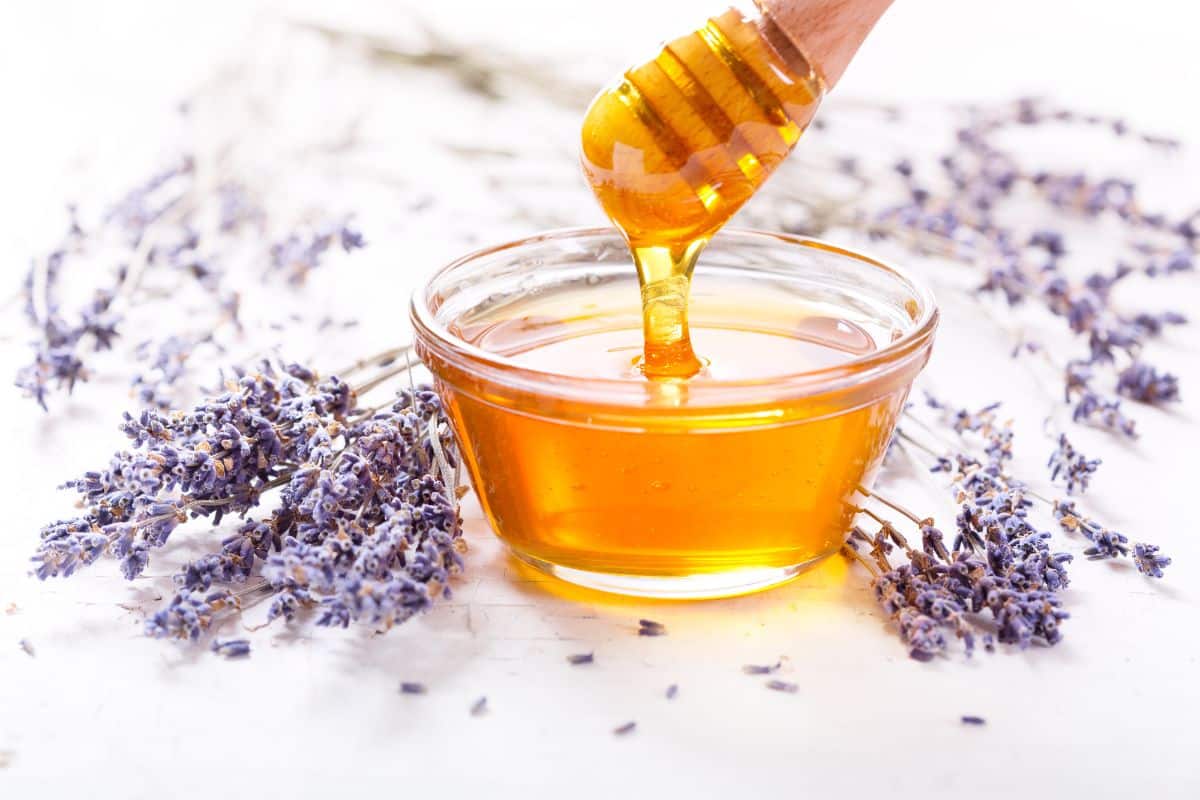
Origin: Lavender honey is derived from the nectar collected by bees from lavender flowers. It is primarily produced in regions where lavender cultivation is prominent, such as the Provence region of France, parts of Spain, and certain areas of the United States.
Flavor: Lavender honey possesses a delicate and floral flavor with distinct notes of lavender. It is often described as having a light, sweet taste with a hint of herbal freshness. The flavor profile can vary depending on the specific type of lavender and the region of production. Lavender honey typically exhibits a light amber to pale golden color, sometimes with a slight greenish tinge. The color may vary based on the concentration of lavender nectar in the honey and other factors such as the bees’ foraging patterns.
Uses: Lavender honey’s unique flavor and aroma make it a popular choice for various culinary applications. It is often enjoyed as a topping for toast, scones, or biscuits. Lavender honey can also be used in teas, desserts, and salad dressings, adding a subtle floral touch. Additionally, it is highly valued in natural skincare products and is sometimes used in home remedies for its potential calming and soothing properties.
Manuka Honey
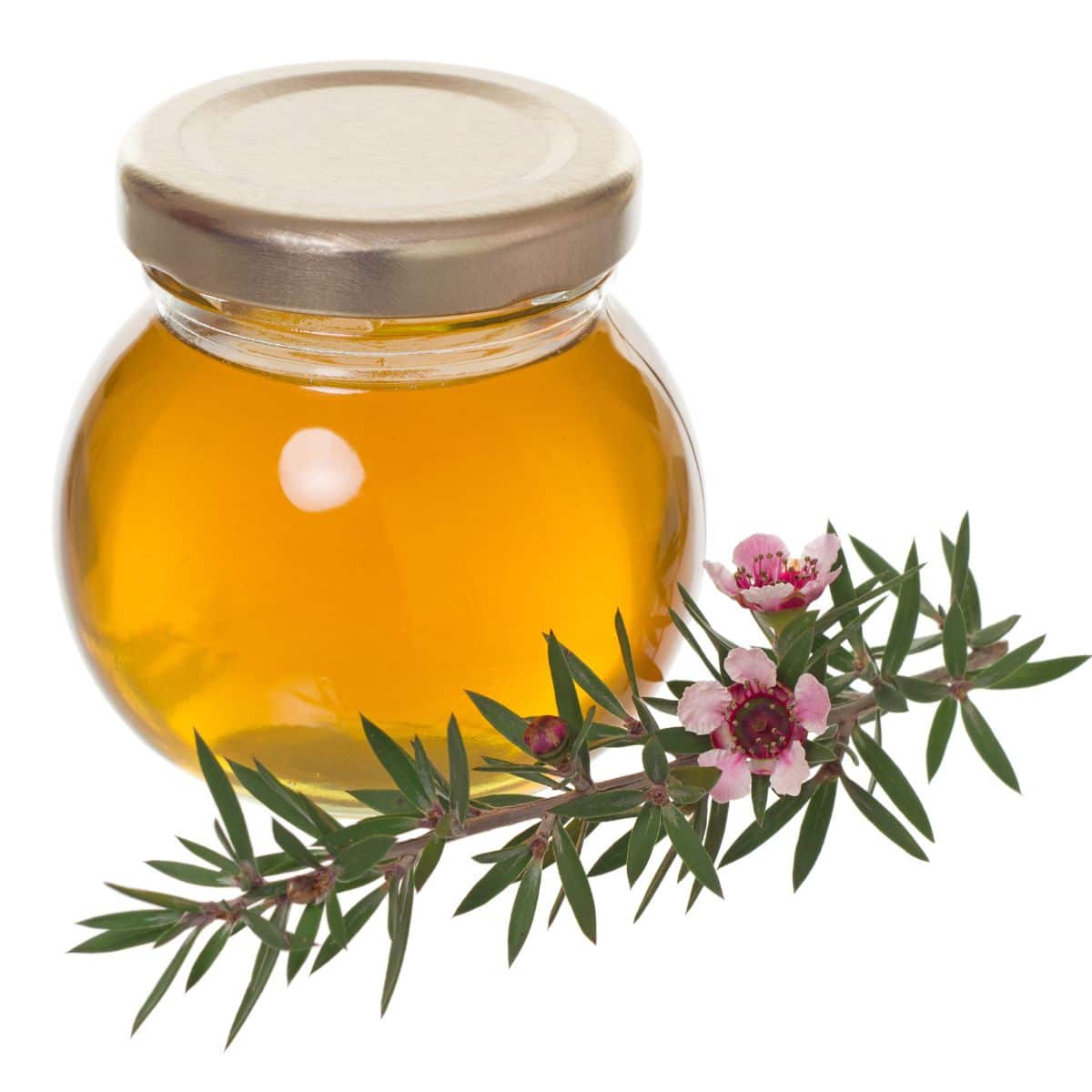
Origin: Manuka honey is produced in New Zealand and parts of Australia. It comes from the nectar of the flowers of the Manuka tree native to these regions.
Flavor: Manuka honey has a distinctive and robust flavor. It is known for its rich, earthy taste with hints of caramel and a slightly bitter aftertaste. The flavor profile can vary depending on the region and the level of Manuka tree floral sources in the honey. Manuka honey typically has a dark amber to dark brown color. The color can vary depending on the specific batch and the degree of filtering it undergoes.
Uses: Manuka honey is often consumed as a natural sweetener or used in cooking and baking. Additionally, it is used in various traditional remedies, skincare products, and wound dressings due to its antimicrobial qualities.
Orange Blossom Honey
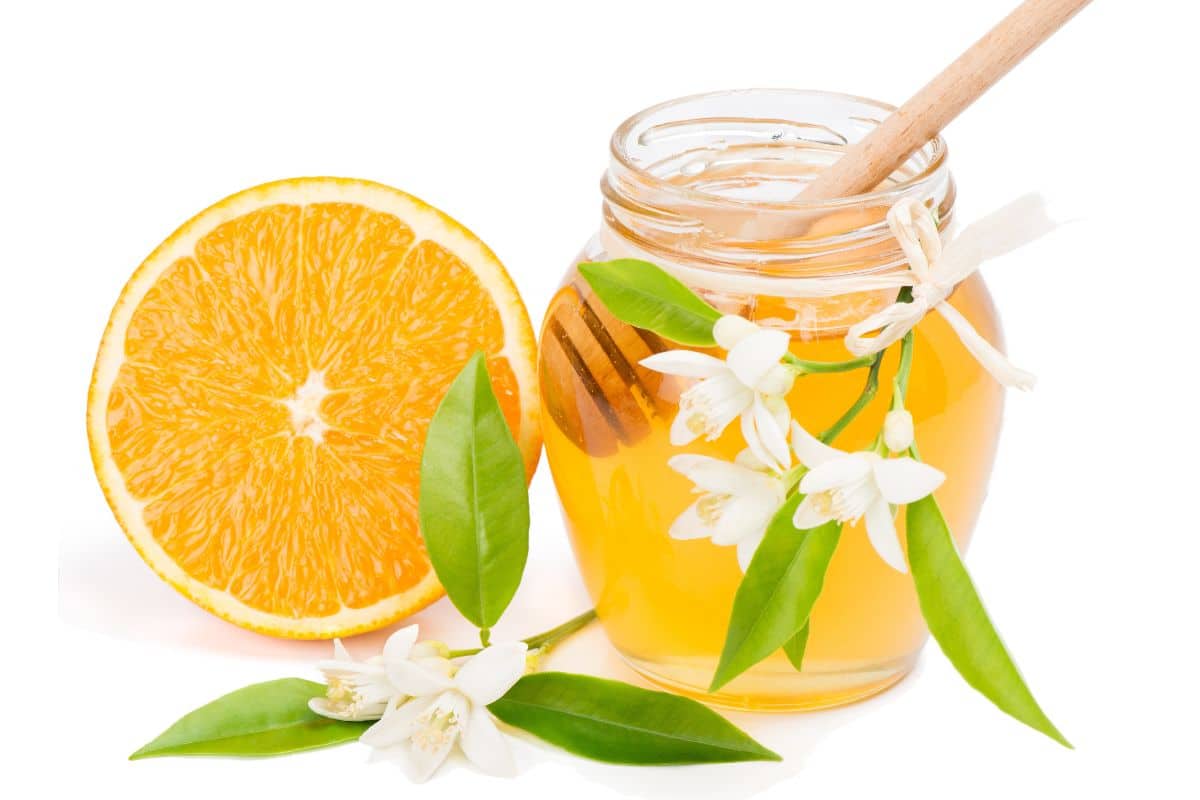
Origin: Orange blossom honey is produced in regions with orange groves, such as Florida, California, and parts of Spain and Italy.
Flavor: It comes from the nectar of orange tree blossoms. Orange blossom honey has a delicate, citrusy flavor and a pleasant floral aroma. It has a light and fruity taste with subtle notes of orange zest and a mild sweetness. The color of orange blossom honey ranges from light golden to amber, depending on the specific floral sources and the processing methods used.
Uses: Orange blossom honey is widely used as a table honey, enjoyed on toast, pancakes, or in tea. Its vibrant flavor makes it a popular choice for culinary purposes such as glazes, salad dressings, and marinades. It also pairs well with cheeses and fruits.
Pine Honey
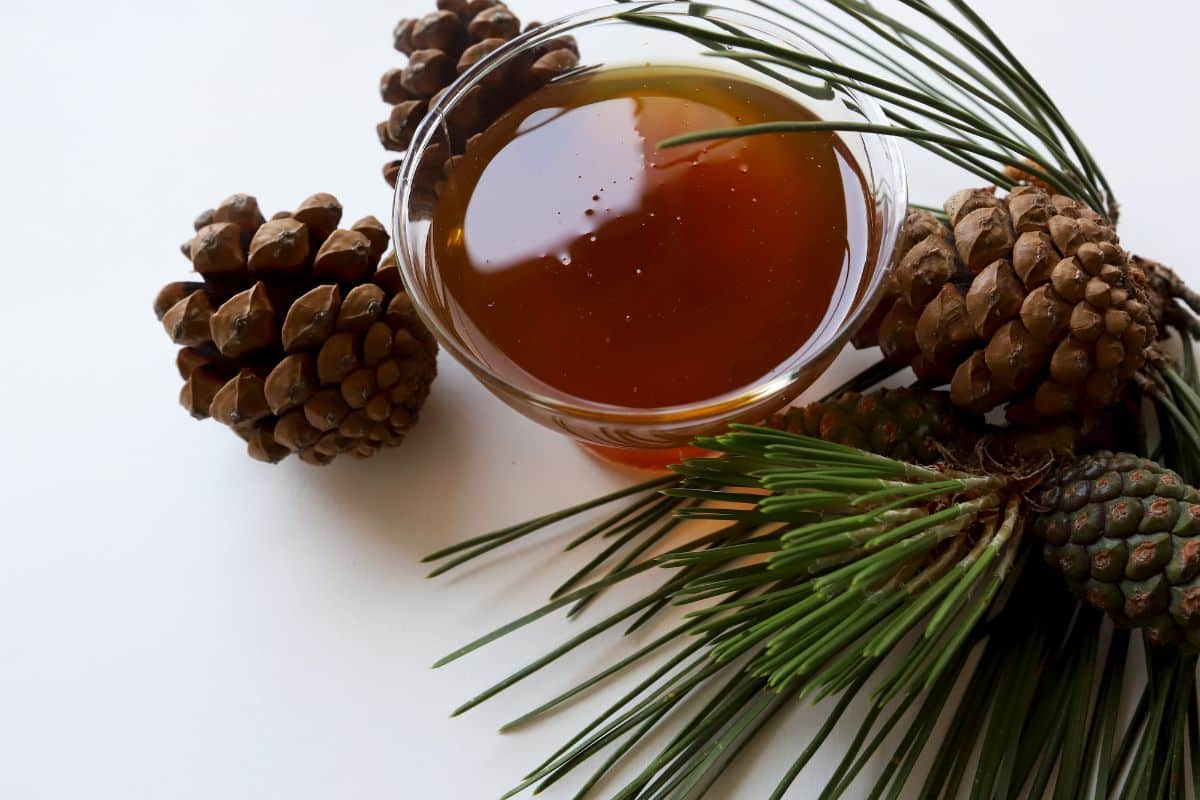
Origin: Pine honey, also known as forest honey, is produced in regions with pine forests, such as Greece, Turkey, parts of Europe, and the United States. It is derived from the sap of various pine tree species, collected by bees.
Flavor: Pine honey has a distinctive, robust flavor that is often described as intense and slightly smoky. It has complex flavors with a strong herbal and woody undertone. Pine honey typically has a dark amber to dark brown color, similar to molasses. The color can vary depending on the specific pine tree species.
Uses: Pine honey is often considered a gourmet honey, and used as a natural sweetener in beverages, baked goods, and desserts. Its unique flavor makes it an interesting addition to glazes for roasted meats and vegetables.
Raspberry Honey
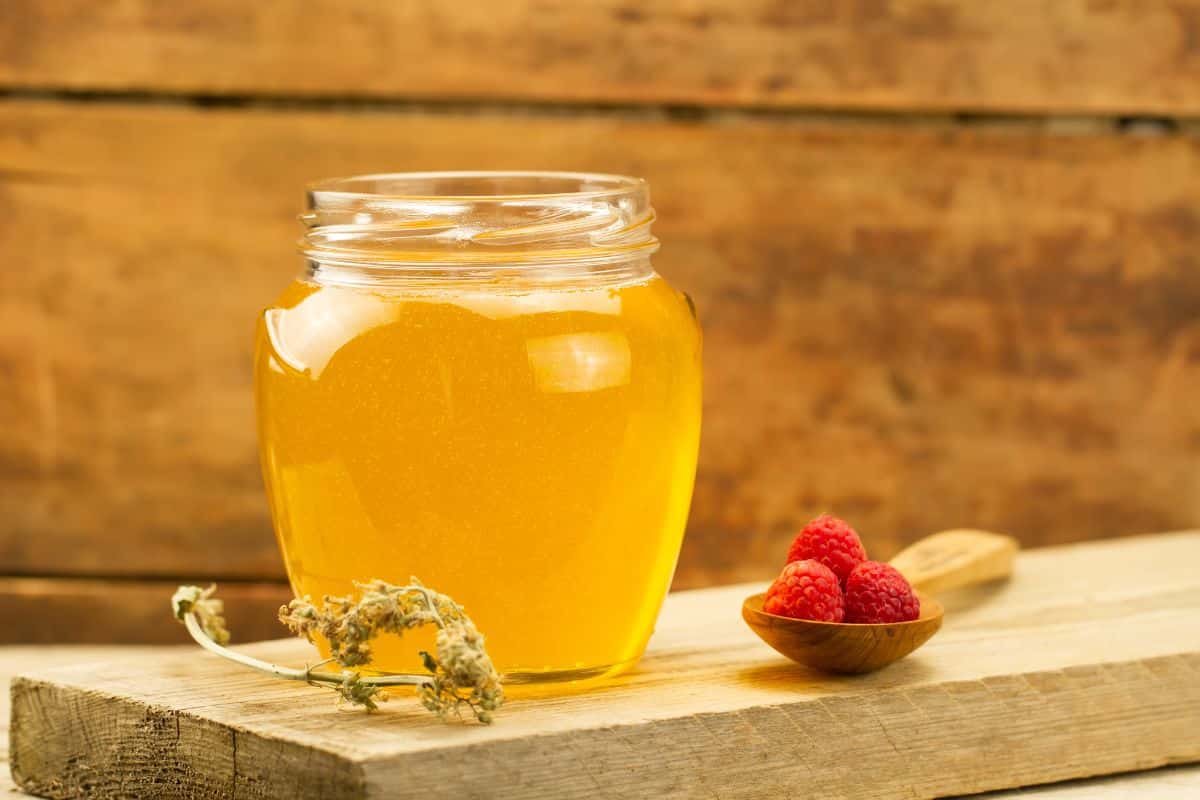
Origin: Raspberry honey is produced by honeybees that gather nectar from raspberry flowers. Raspberry plants are native to Europe, Asia, and North America, and the honey is found in all these regions.
Flavor: Raspberry honey has a delightful fruity flavor with a distinct raspberry undertone. It is often described as sweet and tangy, with floral notes and a hint of berry freshness. The flavor can vary depending on the specific type of raspberry and the surrounding flora. The color of raspberry honey ranges from light amber to medium amber. It may have a slight reddish tint due to the pigments present in the raspberry nectar.
Uses: Raspberry honey is a versatile sweetener that can be used in a variety of culinary applications. Its fruity flavor makes it an excellent addition to desserts, such as drizzling over cakes, pancakes, waffles, or ice cream. It can also be used in salad dressings, marinades, glazes for meats, and as a topping for yogurt or toast.
Rhododendron Honey
Rhododendron honey is derived from the nectar collected by honeybees from the blossoms of rhododendron plants. Rhododendrons are flowering plants that belong to the Ericaceae family, and are found in various parts of the world, including Europe, Asia, and North America.
Rhododendron honey has a distinctive and intense flavor. It is often described as slightly bitter, floral, and earthy, with hints of spice. The taste can be quite complex and may vary depending on the species of rhododendron and the environmental conditions. The color of rhododendron honey is usually light to medium amber, but it can also range from light yellow to dark amber. It does not have any specific coloration associated with the rhododendron plant.
Rhododendron honey is less commonly used compared to other types of honey due to its strong flavor. However, it can be enjoyed as a unique gourmet ingredient. Some people prefer to use it sparingly as a spread on bread or toast, while others may use it in herbal teas or as a flavor enhancer in marinades or sauces.
Rosemary Honey
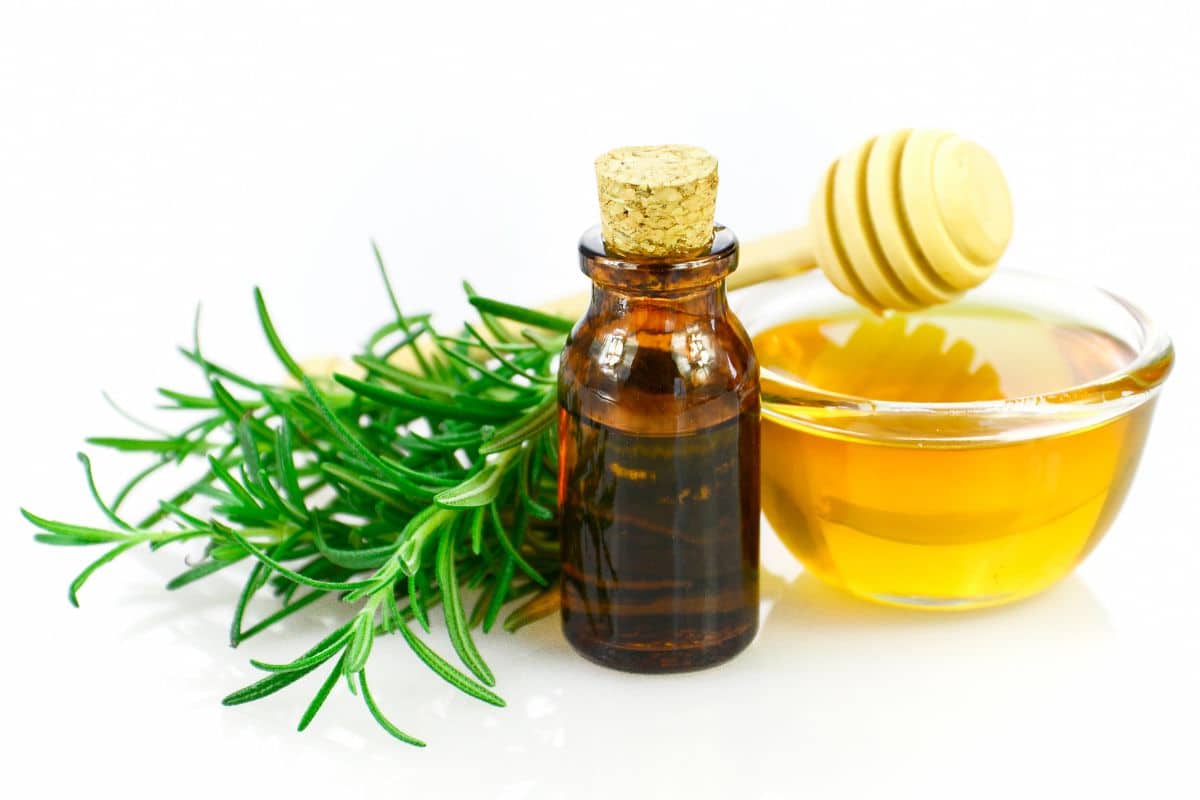
Origin: Rosemary honey is produced by honeybees that gather nectar from the flowers of the rosemary plant. Rosemary is a fragrant herb native to the Mediterranean region but is now cultivated in various parts of the world, including Europe, the Americas, and Asia.
Flavor: Rosemary honey has a delicate and aromatic flavor profile. It is often described as sweet with herbal and floral undertones, and a subtle hint of the characteristic rosemary aroma. The taste can vary depending on the variety of rosemary and the surrounding flora. Rosemary honey typically has a light to medium amber color, with some variations leaning towards a darker amber hue. The exact color can depend on factors such as the concentration of nectar and the processing techniques used by beekeepers.
Sage Honey
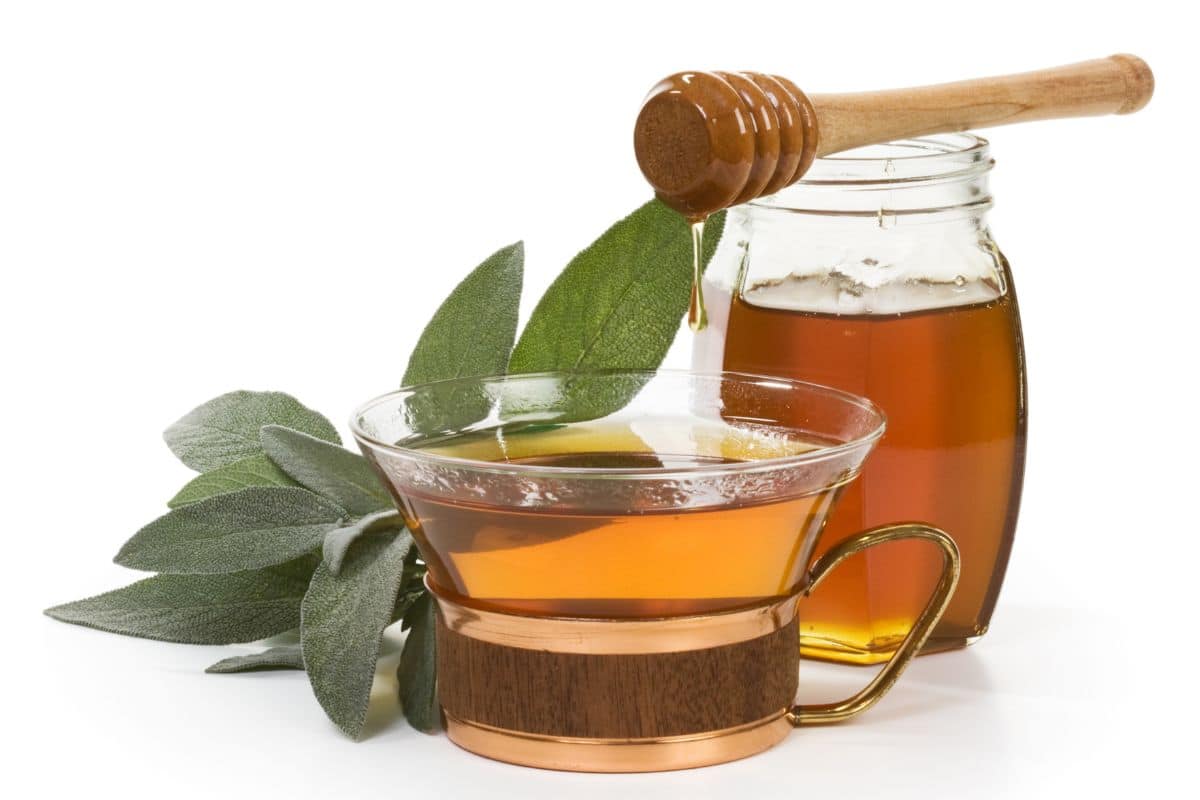
Origin: Sage honey is primarily produced in the western United States, particularly in states like California, Oregon, and Washington. It comes from the nectar of various sage plants, such as black sage, white sage, and purple sage.
Flavor: Sage honey has a distinct, rich flavor with herbal and floral notes. It often has a mildly sweet taste with a hint of minty and earthy undertones. The color of sage honey ranges from light amber to a darker golden hue.
Uses: Due to its robust flavor, sage honey is a popular choice for adding a unique twist to culinary recipes. It pairs well with cheese, bread, and roasted meats. It can also be used in dressings, marinades, and herbal teas.
Sakura Honey
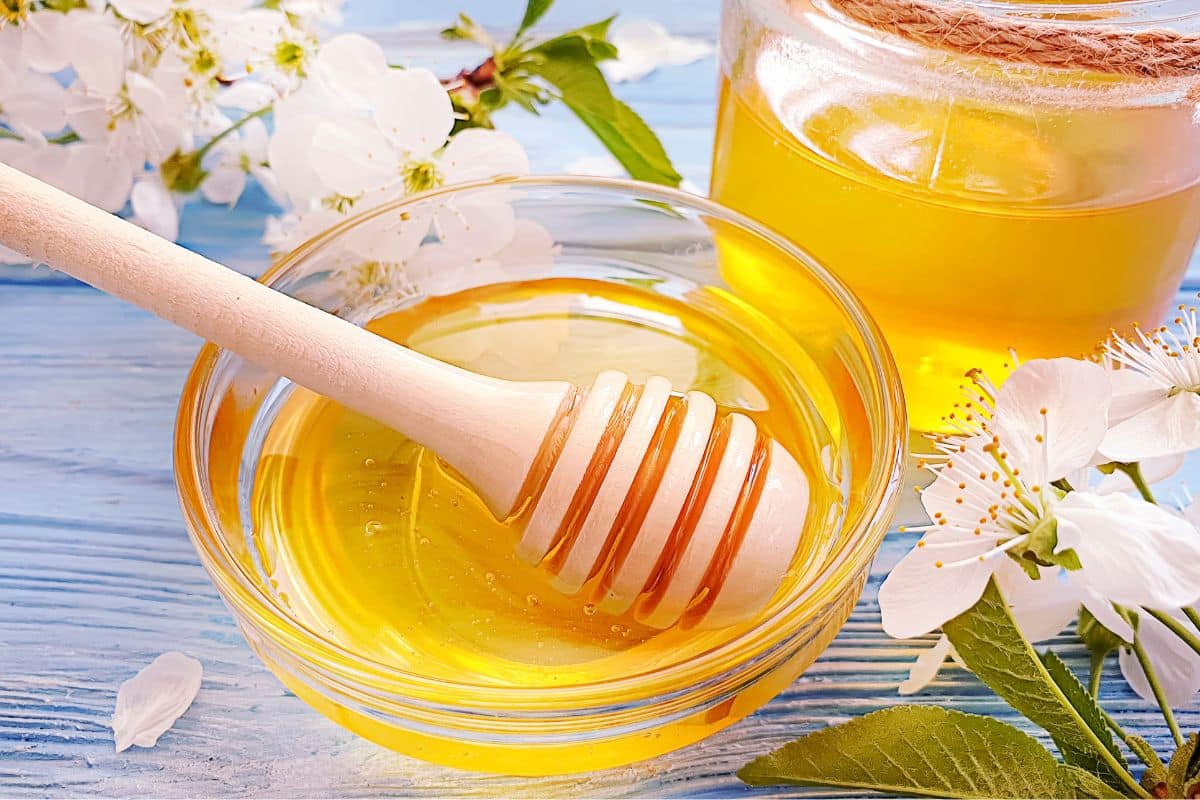
Origin: Sakura honey originates from Japan where it is produced from the nectar of cherry blossom flowers. It is closely associated with the iconic cherry blossom season in Japan.
Flavor: Sakura honey has a delicate, floral flavor with a subtle sweetness. It captures the essence of cherry blossoms, providing a light and fragrant taste. The color of sakura honey is usually light and pale, similar to the soft pink hue of cherry blossoms.
Uses: Sakura honey is highly regarded for its unique flavor and is often enjoyed drizzled over desserts, such as pancakes, waffles, and ice cream. It can also be used as a sweetener in beverages like tea or incorporated into dressings and sauces.
Sidr Honey
Origin: Sidr honey is primarily produced in Yemen, particularly from the nectar of the sidr tree which holds great cultural and historical significance in the region.
Flavor: Sidr honey is known for its strong and distinct taste. It has a rich, caramel-like flavor with notes of molasses and a slightly bitter aftertaste. Sidr honey is typically dark amber or even a deep, reddish-brown color.
Uses: Sidr honey is highly valued regionally for its medicinal properties, and is often used in traditional remedies. It is also enjoyed as a natural sweetener and can be used in baking, cooking, or as a spread.
Sourwood Honey
Origin: Sourwood honey is mainly produced in the southeastern United States, particularly in states like Georgia, Tennessee, and North Carolina. It comes from the nectar of the sourwood tree.
Flavor: Sourwood honey has a uniquely sweet and tangy flavor profile. It is known for its complexity, with hints of caramel, anise, and spice. The color of sourwood honey can range from light amber to a darker amber shade.
Uses: Sourwood honey is often used as a table honey, or as a topping for biscuits, toast, or pancakes. Its distinctive flavor also makes it a desirable ingredient in dressings, sauces, and marinades.
Sunflower Honey
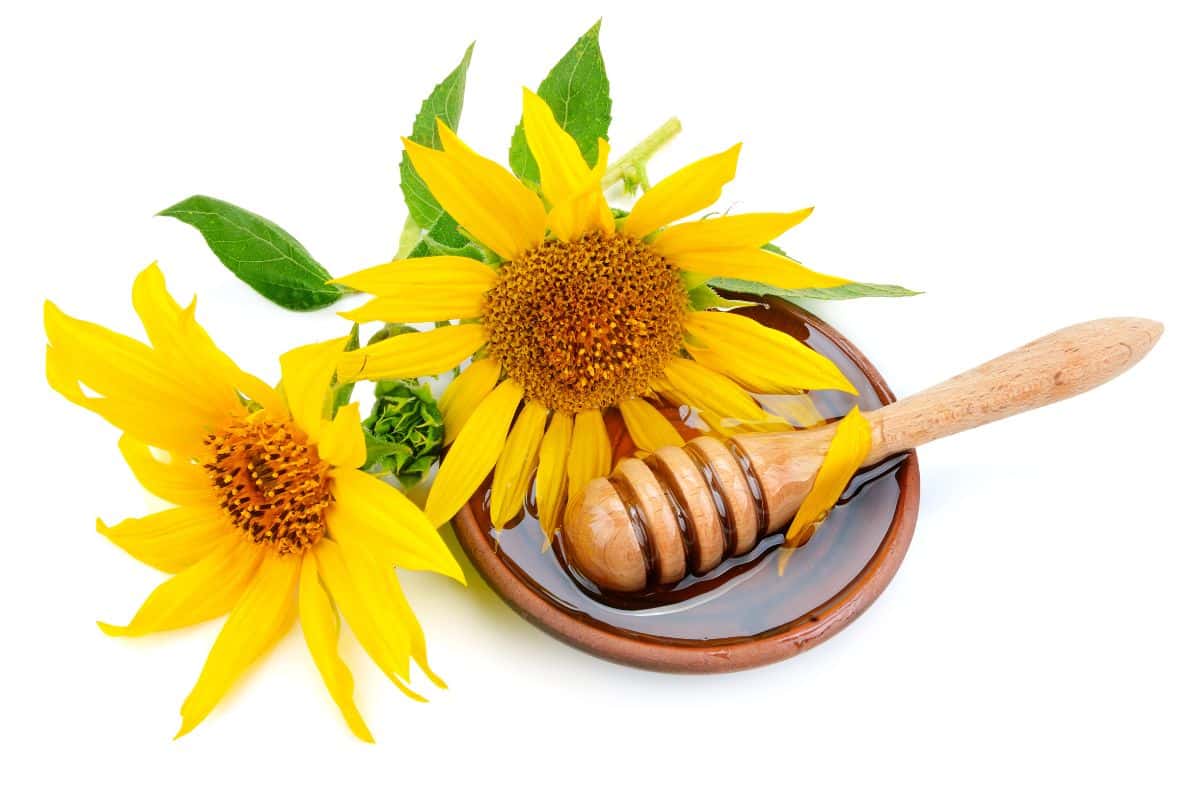
Origin: Sunflower honey is produced from the nectar of sunflower blossoms and can be found in various regions around the world where sunflowers are cultivated.
Flavor: Sunflower honey has a mild, floral flavor with a delicate sweetness. It is often described as smooth and pleasant, with hints of citrus or herbal undertones. Sunflower honey typically has a light to medium amber color.
Uses: Sunflower honey is versatile and can be used in various culinary applications. It is a popular choice for sweetening beverages such as tea or coffee. It can also be used as a topping for cereals, yogurt, or incorporated into baked goods and desserts.
Thyme Honey
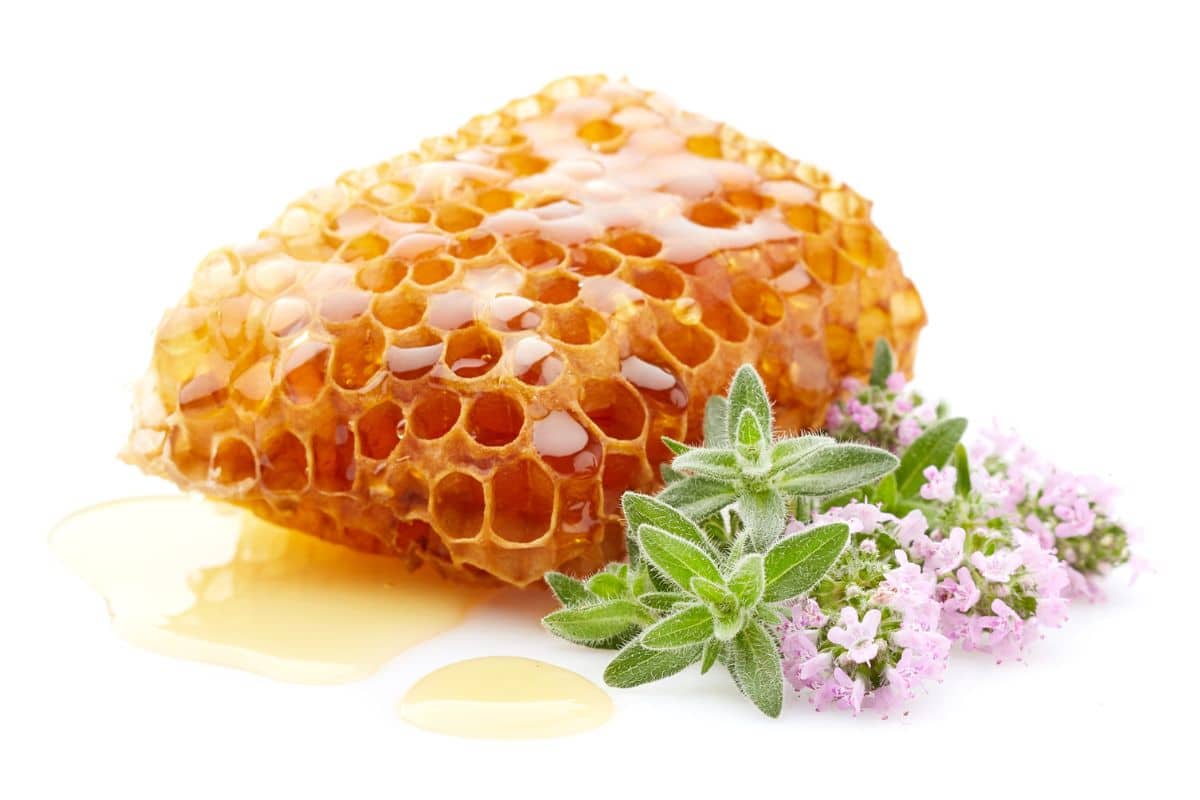
Origin: Thyme honey is primarily produced in regions where thyme plants grow abundantly, such as Mediterranean countries like Greece, Spain, and Italy.
Flavor: Thyme honey has a distinct, aromatic flavor with a balance of sweetness and herbal notes. It often has a slightly minty or woody taste, which can vary depending on the specific type of thyme and the surrounding flora. Thyme honey typically has a light to medium amber color, sometimes with golden or reddish hues. The exact color can vary depending on the flowering stage of the thyme plants and the geographical location.
Uses: Thyme honey’s unique flavor profile makes it a popular choice for both culinary and medicinal purposes. It can be used as a natural sweetener in tea, desserts, dressings, and marinades. Thyme honey is also valued for its potential health benefits, as thyme is known for its believed antibacterial and antioxidant properties.
Tupelo Honey
Origin: Tupelo honey is primarily produced in the southeastern United States, particularly in the swamplands and river valleys of Georgia, Florida, and parts of Alabama. It is derived from the nectar of the white or black tupelo trees.
Flavor: Tupelo honey has a delicate, mild, and buttery flavor with hints of floral and fruity notes. It is often described as having a “clean” and “creamy” taste, lacking the strong aftertaste found in some other honey varieties. Tupelo honey is known for its unique light golden color or pale amber hue. It is one of the few types of honey that remains liquid for a long time due to its low glucose content, making it resistant to crystallization.
Uses: Tupelo honey is highly regarded for its flavor and is often used as a table honey. It is commonly used as a topping for biscuits, toast, pancakes, and waffles. Its mild taste also makes it a popular choice for pairing with cheeses and enhancing the flavor of teas and cocktails.
Wildflower Honey
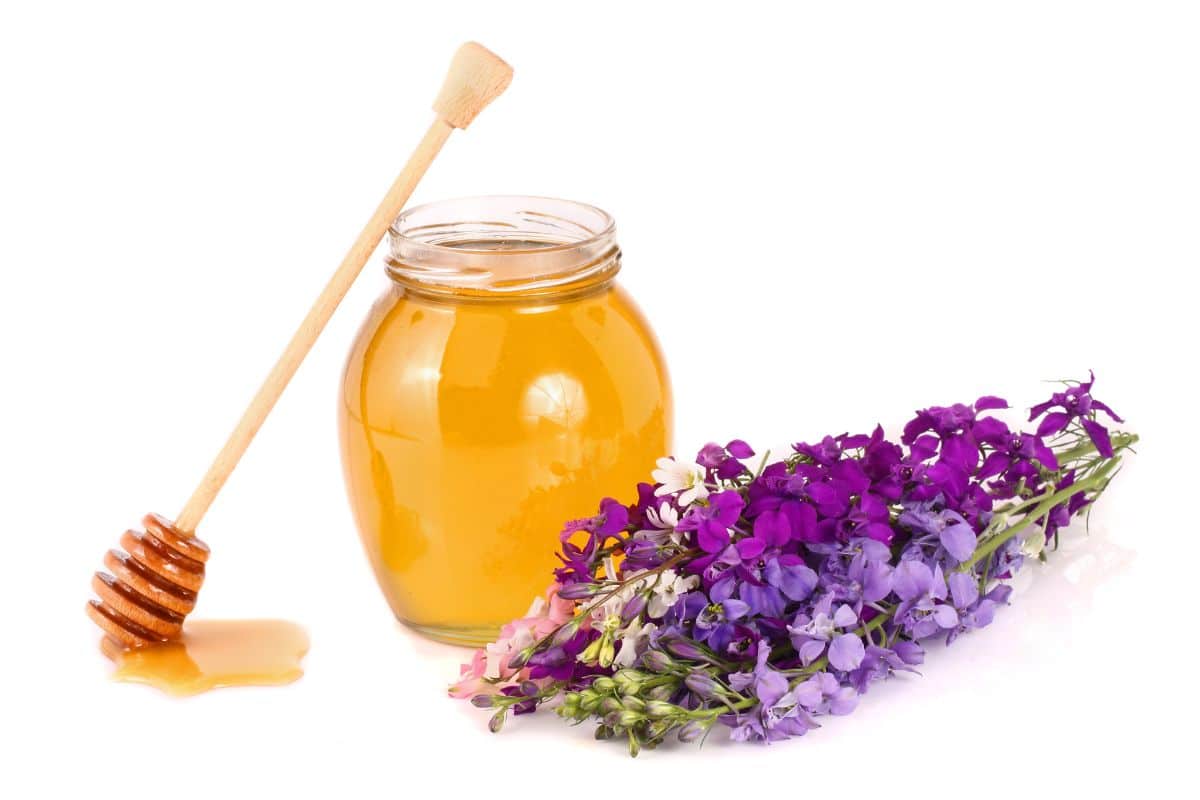
Origin: Wildflower honey is derived from the nectar of various blooming wildflowers and plants. The specific floral sources can vary depending on the region and season, as bees collect nectar from a wide range of wildflowers, including clover, dandelion, lavender, and many others.
Flavor: The flavor of wildflower honey can vary significantly depending on the specific combination of flowers and the region it comes from. Generally, it has a robust, full-bodied taste with a rich, floral sweetness. The flavor profile can range from mild and delicate to more robust and tangy. The color of wildflower honey can range from light amber to dark amber, depending on the predominant floral sources. It may also exhibit variations in color due to the mix of different nectar sources.
Uses: Wildflower honey is versatile and commonly used in various culinary applications. It is often used as a sweetener in baked goods, beverages, and sauces. Its rich flavor also makes it a popular choice for spreading on bread or drizzling over yogurt and oatmeal.
Yucatan Honey
Origin: Yucatan honey comes from the Yucatan Peninsula in Mexico, which is home to diverse flora and vegetation. Bees in this region gather nectar from a variety of flowering plants, including tropical blooms like the dzidzilché tree and the chukum tree.
Flavor: Yucatan honey is known for its bold, robust flavor with tropical and floral undertones. It has a distinct sweetness with a hint of tanginess, reflecting the unique flora of the region. Yucatan honey typically has an amber to dark amber color, depending on the specific floral sources. The color can vary from batch to batch due to the diversity of plants in the Yucatan Peninsula.
Uses: Yucatan honey is commonly used in traditional Mexican cuisine. It adds depth of flavor to dishes like marinades, sauces, and dressings. Yucatan honey is also enjoyed as a table honey, used in beverages, and added to desserts and pastries.
Zambezi Gold Honey
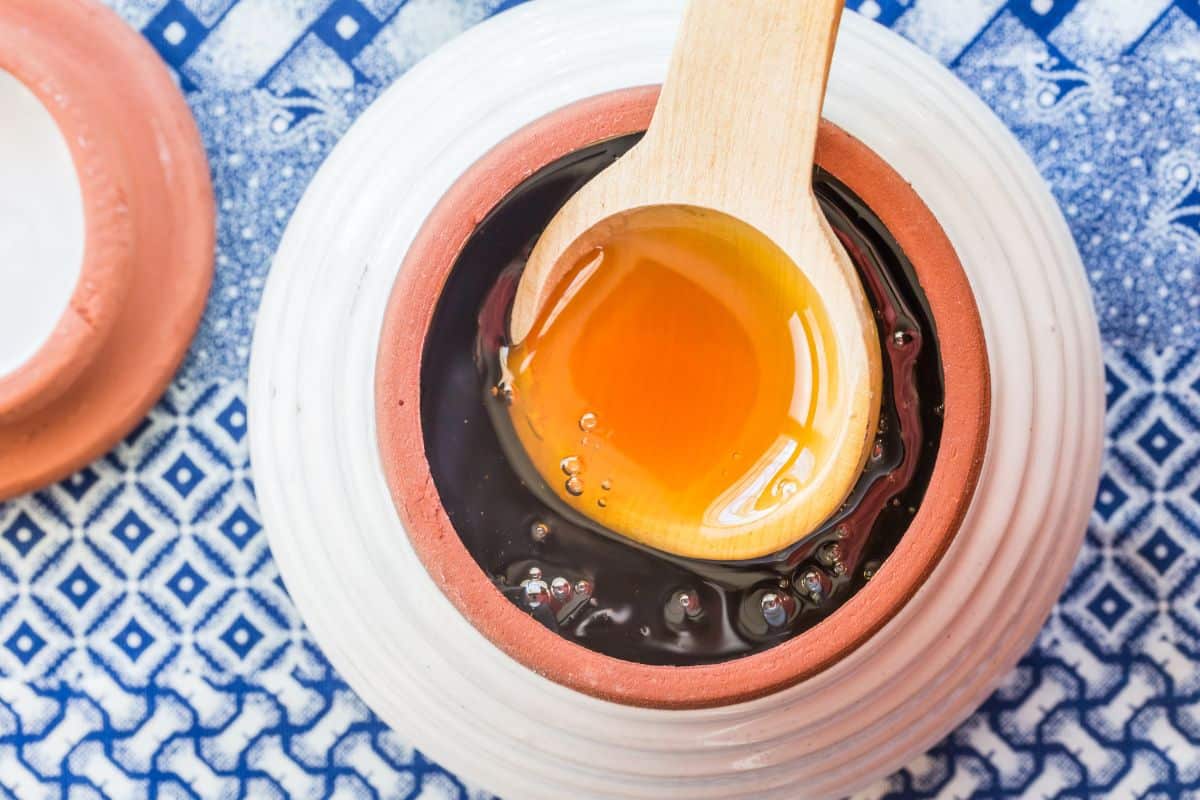
Origin: Zambezi gold is a unique and highly sought-after type of honey that originates from the region surrounding the Zambezi River in Africa. This river flows through several countries, including Zambia, Angola, Namibia, Botswana, Zimbabwe, and Mozambique.
Flavor: Zambezi Gold Honey is renowned for its distinct and robust flavor profile. It has a rich, caramel-like taste with hints of tropical fruits and floral notes. The flavor can vary slightly depending on the specific nectar sources available to the bees in different seasons and regions along the Zambezi River. The color of Zambezi Gold Honey can range from a deep amber to a dark golden-brown shade. The exact color can be influenced by factors such as the types of flowers visited by bees, the time of year, and the processing methods used by beekeepers. Generally, darker honeys tend to have a more intense flavor.
Uses: Zambezi Gold Honey is highly versatile and can be used in various culinary applications and as a natural sweetener. Its unique flavor and aroma make it a popular choice for drizzling over desserts like cakes, pancakes, and ice cream. It can also be used as a glaze for roasted meats or added to marinades for a touch of sweetness. Additionally, Zambezi Gold Honey can be stirred into tea or used as a topping for toast or biscuits.
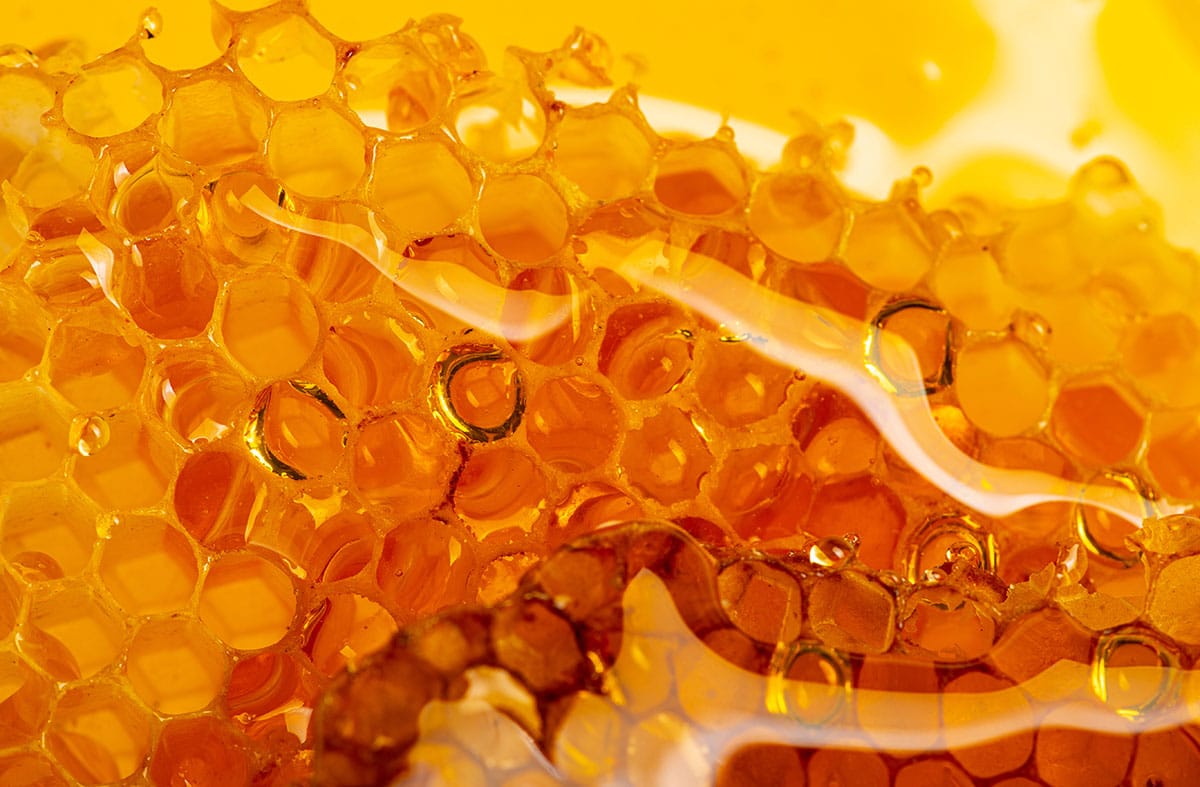
Processed Honey Vs Raw Honey
Processed honey undergoes a process of pasteurization, in which it is heated to high temperatures to kill any potential bacteria and yeast. This process helps improve its shelf life and consistency. Raw honey, on the other hand, is not pasteurized and remains unprocessed, maintaining its natural enzymes and other beneficial compounds.
Texture, Appearance, and Taste
Raw honey often has a thicker consistency and a cloudy appearance compared to processed honey. Processed honey is typically clear and has a smoother texture due to the filtration and heating processes it undergoes. The taste of honey can vary depending on the types of flowers the bees gather nectar from. Both processed and raw honey can have distinct flavors based on the floral sources, but raw honey may offer a more robust and complex taste due to the presence of various enzymes and pollen.
Crystallization
Over time, honey tends to crystallize, forming solid sugar crystals. Raw honey, however, is more prone to crystallization because it has not been processed. Crystallization does not affect the quality or safety of the honey and can be reversed by gently heating the honey.
Nutritional Difference
Raw honey generally retains more of its natural nutrients compared to processed honey. The pasteurization process can destroy some of the enzymes, antioxidants, and other heat-sensitive nutrients present in honey. Therefore, raw honey may have a slightly higher nutritional value, and some people believe increased medicinal properties.
Well, that is about it for varieties of honey. We hope you found some information you can use, and as always happy cooking!
Trivia Answer
1/12 of a teaspoon. This means that it requires the lifetime efforts of 36 bees to produce a single tablespoon and 576 bees to produce a single cup.
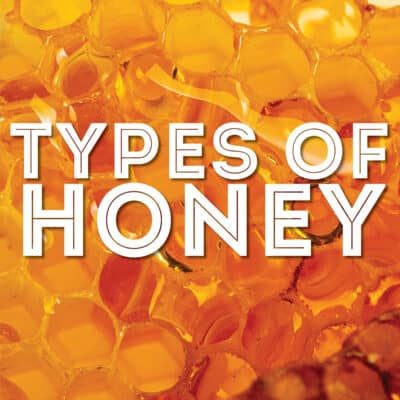
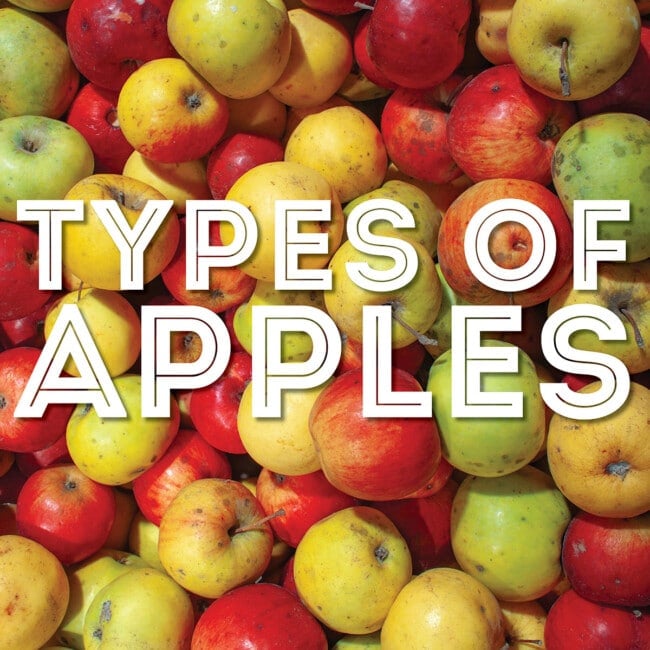
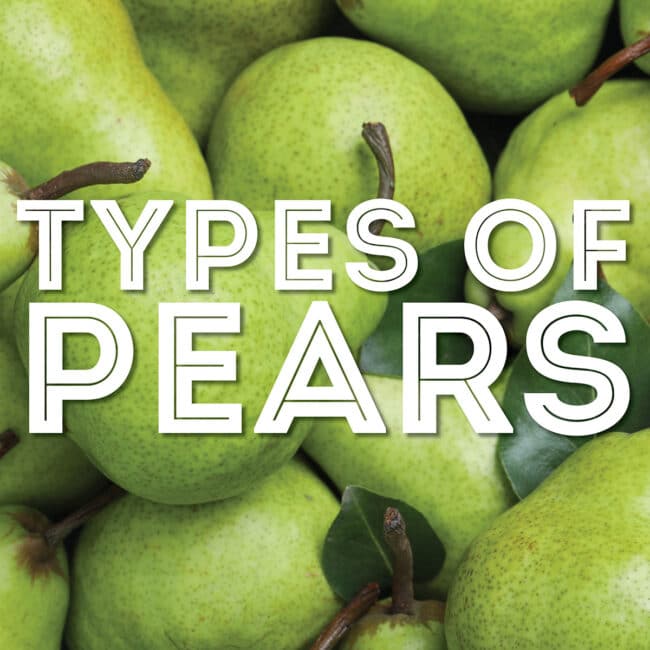
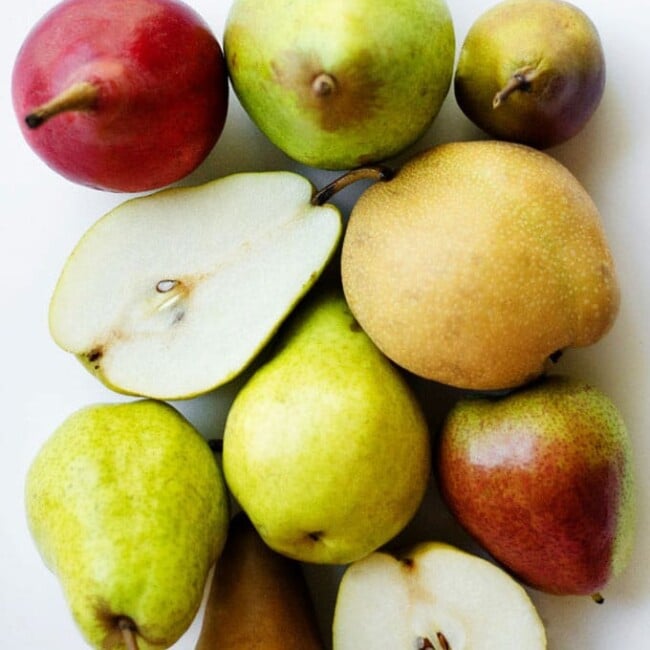
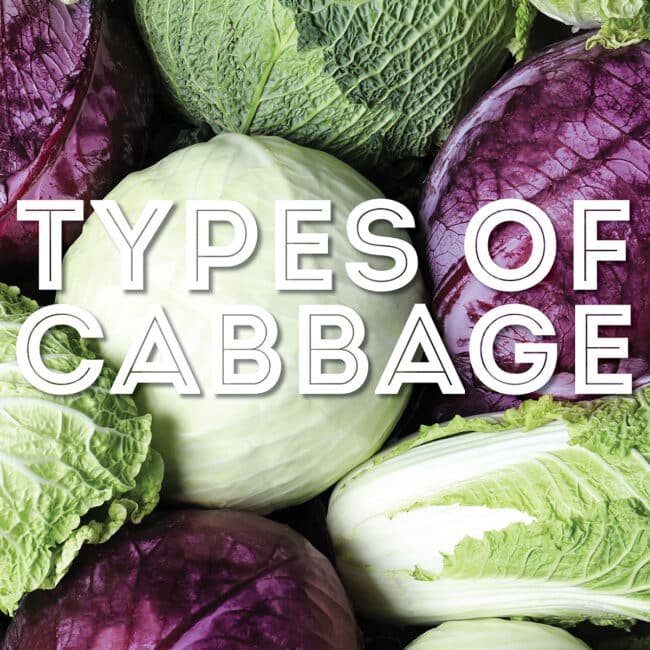
Leave a Comment